-
THE HOME OF STREET PHOTOGRAPHY
Founded 2000
- iN-PUBLiC was set up in 2000 to provide a home for Street Photographers. Our aim is to promote Street Photography and to continue to explore its possibilities, we are a non commercial collective. All the photographers featured here have been invited to the group because they have the ability to see the unusual in the everyday and to capture the moment.
iN-PUBLiC was relaunched in 2020 with a renewed commitment to present the best photography from the public realm that faithfully records everyday life without staging or manipulation.
iN-PUBLiC are
-
-
iN-PUBLiC is an International Cooperative of Photographers
iN-PUBLiC
Suit 79
Maddison House,
226 High Street, Croydon,
Surrey,
CR9 1DF

Welcome to the first iN-PUBLiC hosted online exhibition. This exhibition brings together photographers who have worked extensively within London’s renowned financial district, colloquially known as the Square Mile.
With an Introduction by Francis Hodgson, the exhibition has been divided into two sections. The first section ‘Before’, shows the City in it’s full busy glory, a thriving centre of banking, investment and insurance. The second section ‘After’, illustrates the dramatic change that the City has undergone due to the Covid19 viral outbreak in 2020.
Exhibitors
Introduction by Francis Hodgson
An Habitation of Bitterns
When London shall be an habitation of bitterns, when St. Paul’s and Westminster Abbey shall stand, shapeless and nameless ruins, in the midst of an unpeopled marsh; when the piers of Waterloo bridge shall become the nuclei of islets of reeds and osiers and cast the jagged shadows of their broken arches on the solitary stream, — some transatlantic commentator will be weighing in the scales of some new and now unimagined system of criticism
Percy Shelley, writing under the name Miching Mallecho, in his Dedication of Peter Bell the Third, 1819
Nobody expected the Coronavirus. Yet maybe we all should have. There’s been a certain amount of hand-wringing about the (possibly criminal) unpreparedness of governments, notably our own – and that’s right. But it wasn’t just in isolation wards and ventilators and personal protective equipment that we weren’t ready. It was in the imagination. I well remember Croatian friends, both Christian and Moslem, and of a variety of ethnic backgrounds, telling me how it had seemed completely impossible that a civilised country, European, moving to considerable prosperity, could be torn apart in the way the whole region that was once under Yugoslav control was tortured throughout the 1990s. They really couldn’t imagine it. Surely a solution could be found. Who was prepared for Sarajevo? Who was prepared for Srebrenica? Time and again, the unimaginable has been just around the corner, and the slide from ‘normal’ to dearth or death, has been shorter and quicker than anyone could predict.
Coronavirus was like that. It was exotic, a faintly heard echo from Wuhan. Then it was all over us. Among the many harsh ironies there, the most savage is simply this: that we had a government of Tories at the time. Tories, who had bleated themselves the party of management for a generation or more, at least since Baroness Thatcher’s maunderings about ‘prudent housekeeping’. The Tories (the name is an old one in England, but what it represents now is really the party of shareholder capital, which must not be impeded in any way) had always boasted about their effectiveness, efficiency, ‘getting the job done’ and so on. Come the coronavirus and these people simply looked a shower. They were slow when it mattered to be quick or they made decisions and then thought a bit more and unmade them straight away. They stuck to stupid and unjustifiable guns on points of highly questionable principle. They gave contracts for urgent medical supplies to their buddies who then provided sub-standard kit. They gave unclear guidance on what to do, and then at least one of the very most senior group broke even that guidance in a very public way. They were (as they are wont to be) cruel to ethnic minority groups, to the poor, the old… The truth was the Tories in power weren’t management types at all; they were ambitious wonks who had read PPE at Oxford (it stands for Philosophy, Politics and Economics) and most had never held any kind of a ‘real-world’ job at all. They didn’t look a shower; they were a shower.
All this was very bad: people’s lives were made harsher than they ought to have been, and many lives were unnecessarily lost. Beyond the cronyism, the incompetence, the unstatesmanlike and frankly unprofessional behaviour of the governing Tory cabal in Westminster, there was an ideological dagger plunged deep into Tory hides, too. The heart of Toryism as an ideology since Friedrich Hayek had been a conviction that the markets could act as a social regulator: that in contradiction of the old wisdom about knowing the price of all things and the value of none, a social price and value could be set on anything. Free-market true-believers had long felt hampered by regulation based on social care, on responsibility for the less able or less fortunate, or any sense of restricting one’s own greed in order that more good stuff might be shared more widely. And those true-believers had been in power a long time. The UK has been living on absurd spin-offs of their doctrine so long that it almost feels natural. An ‘internal market’ is supposed to operate in the National Health Service or the British Broadcasting Corporation. Service cuts have been so severe for so long that we forget what it was just to do public things properly. Public services are quite routinely farmed out – and devil take the level of service – to private companies who then trouser the public investment in those services for themselves.
Yet the minute the coronavirus arrived in earnest, the markets simply disappeared, and the people who run them retreated to their country houses asking for government support. I heard a number of times of people of the investment-banker class taking their families to their second homes when the country was in lockdown (and it was clearly against the guidance to do so) – but they sent their holiday goods by courier in case it should be obvious to a police car on the way that they were carrying the innumerable chattels without which they cannot imagine a moment’s leisure. The mute acknowledgement of shame in those expensive courier journeys sticks still in my throat. Lockdown in luxury, but hide that you’re doing so? For nasty hypocrisy, that takes a good deal of beating. And these were the people who thought of themselves as, and sometimes actually used the word, an ‘elite’. The markets, in the hands of those people, went away when the virus arrived.
The first thing the government of Prime Minister Boris Johnson did to deal with the coronavirus was a make a massive public investment to support the economy, mainly through a support plan for wages to delay catastrophic job losses in the immediate height of the viral crisis. He promised also an increase in infrastructure projects although it turned out (as so often with a government that cares more for public relations spin than for the substance of policy) that much of this money had already been promised and was simply being re-announced as a new offer. The ideas behind that investment might have come straight from the New Deal of Franklyn Roosevelt. The sums at stake were certainly far smaller – and the intentions certainly very different. Yet the conclusion was inescapable.
That show of public investment at times of crisis, coupled with the sheer managerial incompetence of the Johnson government, simply gave the lie to Toryism.
If pure, old-fashioned Keynesian support for the economy on a huge scale was the answer, and the markets had so blatantly failed to intervene in any meaningful way as we had been so often told they would, and if, too, the self-appointed ‘party of management’ had so signally failed to come anywhere close to effective management in a crisis, why then the twin supports of modern Toryism had both been swept away in the same pandemic. It is hard to see how Toryism as an ideology can survive by consent after that. It can only survive by force – the force of capital.
Shareholder capital is a harsh, harsh mistress. Without excessively romanticising the system that late-capitalism grew out of, it is possible to say that capital used to take some regard (often slight, but still..) of interests other than its own, and specifically the interests of place. A quarrying firm might hear the concerns of villages a few miles from the quarries through which the trucks ran at night, and adjust the timetable. Pensions in some imaginable past before Robert Maxwell used to be honourably run for the interests of former workers. All that – to the extent that it existed at all – has gone. The new hyper-mobility of capital means that it is always possible for shareholders to threaten to take their money elsewhere, where labour is cheaper, or restrictions are fewer, or the damned greens don’t make such a fuss about a few dead fish. The connections of capital to place are now very slight; that’s what we really mean by globalisation. The Guardian’s obituary of Arnold Weinstock, the phenomenal businessman of the old-school who powered Harold Wilson’s ‘white-heat of technology’, and who for all his confidence in capital, was too old-fashioned for Margaret Thatcher, was unequivocal. “He failed to please the City because of the GEC’s [General Electric, Weinstock’s conglomerate] old-fashioned corporate governance and a belief that he was not delivering enough shareholder value.”
The heart of all of that, course, was the City of London. When our leaders talk airily about the markets, what they mean is small groups (overwhelmingly male, overwhelmingly white, very sorely in need of checking their privilege) who can like petulant children take away their bats and balls any time they don’t win the game. They answer to nobody beyond their shareholders: local law barely holds them. And the City, for various reasons to do with the fortunes of those people, was likely to become more ghostly sooner or later.
Although a number of artists have shown it us, we didn’t have the imagination to see it coming. There is a long history of ruins – from the deliberate or hideous to the fanciful or fictional. From Mithraic temples to bomb-sites to follies to sci-fi, the emptying of London has been a theme. Remember Macaulay’s ‘New Zealander’ contemplating the ruins of London, and Gustave Doré’s engraving of him in Jerrold’s London: a Pilgrimage? There is a pretty extensive literature to show that he was not specially original to Macaulay – and that lots of commentators thought the idea of the future fall of London trite and overquoted. Vivienne Morel, for example, wrote a blog piece quoting a lecture given to the Hawkes Bay Philosophical Institute in 1882 by one William Colenso, which was even then titled “A Few Remarks on the Hackneyed Quotation of Macaulay’s New Zealander.” None of which stopped the theme from meandering on. Eliot’s The Waste Land bears witness to that, and a number of films, including Danny Boyle’s 28 Days Later. A recurring modern trope of this kind has been the ‘neutron bomb’ which supposedly kills people but leaves buildings intact – thus emptying the City without damaging it, as we see in a number of coronavirus views of London. The writer Isaac Asimov acidly remarked that the neutron bomb “seems desirable to those who worry about property and hold life cheap”, a fairly accurate summing up of the Johnson government.
The role of London as a prime trading centre is safeguarded partly by its position at the centre of the lines of longitude. That means that the long trading day can only really bridge from the Far East to California and back again in London. The position of the Greenwich meridian is itself a colonial legacy, although nobody could imagine when it was agreed how central it would become for that quite accidental reason many years later. That physical position won’t change. But Brexit throws great doubt on London’s ability to hold its gain. If London’s rulers have voluntarily stepped away from the biggest trading block in the world, it is hard to see that trading block not finding a Frankfurt or a Paris a very creditable rival when they need an intermediary with the world’s capital. And neither Frankfurt nor Paris lies so many miles from the meridian, as little-Englanders will discover when it’s too late for them. It’s perfectly possible to hope that within my lifetime, we might be able to afford little flats at the top of the Gherkin or the Lloyd’s building. Look on my works, ye Mighty, and despair, as Shelley had it written on the pedestal of the colossus of Ozymandias .
And don’t forget that many of the buildings we see here, emptied by the coronavirus, were only put up in the mayoralty of the present Prime Minister, whose sole policy as Mayor of London sometimes seem to have been to allow the big corporate spenders to do anything they liked as long as they stayed, and who certainly pushed hard for planning requirements to be made less onerous for them. Famously, the long-standing planning rules about preserving the great sight lines to St Paul’s from the high grounds of London – Hampstead Heath and Blackheath and so on – were abandoned during Johnson’s time as Mayor. Would it be a kind of justice for those buildings to lie empty within a few years because they were never really necessary anyway? Is it already a kind of justice that the mayor’s office (now in the hands of Johnson’s successor, Sadiq Khan) is likely soon to be moved to an unlovely building formerly occupied by the Siemens engineering firm in the Royal Docks? As the London specialist blogger diamondgeezer put it, “Relocating your regional seat of government to the edge of a post-industrial wasteland beside a wakeboarding centre and a Thai restaurant, when it used to be in the heart of the city opposite a World Heritage Site, speaks volumes about your city’s economic outlook.”
Automation has been with us a long time, but in the markets, it rules. I remember being amazed when fibre-optic cabling first came along that a telecomms firm wanted to lease the hollow inside of Joseph Bazalgette’s Embankment: running the cables in the straighter lines of the broad well-built tunnels which already housed the District Line Railway saved a few milliseconds per call – and in those early days, fibre-optic traffic was mainly financial. More recently, I met a school mathematics master who made a fortune by writing dealing code so elegantly simple that each transaction is a fraction quicker than the rivals’: he is described as writing directly in binary. The markets may hire more and more people in the back-offices: doing things like the ironically-named ‘compliance’, but at the cutting edge where the deals are actually done, they need fewer and fewer people. The visions of Andreas Gursky (or of Tom Wolfe) of trading floors heaving with sweating masters of the universe in garish colour-coded blazers, screaming pips at each other, are over. Many indeed are the firms which realised in the coronavirus that they had less need of the constant daily contact of the office, and the consequent rent and bills and rates. Expect many employees to be given not the privilege of home-working in the future but the obligation of it.
We still think of London as a medieval city: there is still a Leather Lane where they made leather goods, and a Hatton Garden for diamonds and the Inns of Court for shysters. (Has anybody, by the way, written about how the lawyers were among the first to perfect the restrictive practices labour movements were later so excoriated for trying to imitate?) We can think of the dispersal of Fleet Street as the great exemplar of the emptying of a trade quarter: technological change forced on a hesitant and privileged workforce, and the old bastions abandoned. And if the markets themselves are now trading through algorithms, it is completely predictable that their offices won’t just move to Canary Wharf. They’ll move as call-centres already have, to the Indian subcontinent. Or they’ll move, in the end, directly to the customer’s phones. Who knows? But whatever else happens, they won’t need huge towers perched on the medieval street plan of an old Hansa trading town. So when the coronavirus emptied those streets, it looked a surprise, but in reality, it was the predictable progression simply pushed along faster than expected.
We’ve seen threats to the City comparable to the coronavirus before, lots of them, but usually they’ve been expressed through sights of people in action, doing their things. Think of the ‘ring of steel’, when armed policemen (still then a rarity in London) tried to reassure the financial community after the bombing of the Baltic Exchange that the problems of Northern Ireland would not be allowed to affect the wheels of commerce.
The Windmill theatre was able to boast after the Blitz ‘We Never Closed’. There’s that famous milkman (probably modelled and posed rather than simply seen) by Fred Morley, picking his way through the rubble. His milk remains perfectly wholesome, his white coat a garment of purity and virtue like the surcoats of the crusaders depicted in Ladybird books. Bill Brandt’s Blitz pictures, in the crypt at Spitalfields or in the tunnels of the Tube, are all about people. The empty London scenes he made – as in A Night in London – are mainly earlier than the Blitz. So, too, are the ponderous but wonderful fog-scapes of Harold Burdekin’s London Night (which was actually published before Brandt’s book, in 1934 to Brandt’s 1938). These aren’t the only prefigurings of an emptied City, by any means. HG Wells, after all, emptied the whole of London in The War of the Worlds, and Jon Savage, the Boswell of punk, made in the late 1970s a series of pictures for his magazine London’s Outrage called Uninhabited London (you can arrange to see them in the Tate), with a nod to Ballard. The same Ballard, for whom emptiness was a décor as much as emptying was a theme, who wrote in 1984 a tiny jewel-like piece of great hardness called The Autobiography of JGB for the magazine Ambit in which he foresaw an empty Shepperton (his own district) in an empty London. Ballard saw it: it can happen.
There are a lot of very fine photographers in this little online exhibition. But what they’re treating of, the way that the City has emptied, may in fact not be quite down to the obvious and immediate cause of the outbreak of the coronavirus. It may be that the city has been at risk of emptying for a while, and it took the era of masks to see it.

Francis Hodgson is Professor in the Culture of Photography at the University of Brighton, he was one of the founders of the Prix Pictet as well as Head of the Photographs Department at Sothebys and the photography critic of the Financial Times for many years.

Charlie Kwai |Overtime
Charlie Kwai is a native East Londoner living and working in the UK Capital.
Website
Overtime observes the cold, hard truths of city life – exposing the side effects of a lifetime of work, peering into the obscure and humorous daily grind of the business man. The work straddles between the amusing and sobering reality of the occupational hazards that come with the pursuit of success – where no prisoners are taken in the underbelly of the City of London
Street Max21
As a street photographer, I take an observational view of how our present circumstances govern our behaviour individually and in crowds. Progressively, we appear to interact with each other only on a synthetic basis. We attempt to mass connect with the aid of modern technology, but in so doing pay less attention to individual connection. I think this is compounded by the increasingly designed environment we inhabit. The codes we see, hear and read within it impact upon our behavioural processes and ultimately isolate us.
Website
“In developing scenes, I try to choose architectural backgrounds against which I can display separated figures, distributing or choreographing them across the frame. The architecture becomes incidental to a scene or situation that may or may not evolve within it. I tend to look for sites or places where people pass through without congregating. To begin with, if there is one figure or two or more figures who are positioned apart, I’ll wait until they’re joined by others in the hope that they’ll create a spatial and enigmatic dialogue. The figures often take on the look of stressed automatons acting out prescribed scenes. At a time when it’s becoming harder to discern what is human and what isn’t, their isolation from each other serves to emphasize an unreal and machine-like formality. These isolated figures don’t have to be interesting in themselves, so long as they create a narrative tension with others. It’s important that there is an element of movement from the figures. Everything must appear to be changing and in flux at the same time as retaining a spatial integrity. In an age wracked with anxiety and uncertainty, there is still a challenge to inject a boisterous creativity into a streetscape of robotic conformity.”
Richard Baker | The Enclosure
Richard Baker is based in South London, he studied documentary photography at Newport under renowned Magnum photographer David Hurn and has gone on to document many aspect of British Life from the Red Arrows display team to the current Coronavirus crisis. He tries, in his own words, to “pursue projects that are geographical or merely zeitgeists of the incongruous and the everyday”.
Website
Crossing the ancient boundaries into the City is like entering a zoo-like enclosure in which my species doesn’t belong. I don’t wear a blue suit and my shoes aren’t polished enough to allow me entry into an office atrium. In fact, if in the past I have walked into an indoor corporate space, security sentinels have looked me up and down then pointed me to Deliveries, round the back. The Tradesman’s entrance.
And yet, unlike in other parts of the capital, even during times of Irish and Islamic terrorism and the proliferation of CCTV, the camera isn’t seen as a suspicious object by the City worker. With a sense of pride of their workplaces, they pour off the trains at Liverpool Street and pace to their offices with a glow. The attention goes with the job.
It’s been years since I last saw the same old gentleman who would come through Cornhill towards Bank and pay for his Evening Standard: a man in his seventies wearing a bowler, pinstriped suit with a brolly on an arm. For woman back then, it was big hair, pearls and Thatcherite shoulder pads. And for the lads, the uniform of money was check and brogues. Nowadays, bare ankles are showing and Brylcreem is back.
My first proper forays here were when a magazine paid me to photograph a year in the life of the City in the early nineties. Every time I walk back in today, the social adjustments are subtly noticeable. Happily, the pictures age immediately.
Polly Braden | Square Mile : A Secret City
London based Polly Braden is a documentary photographer whose work features an ongoing conversation between the people she photographs and the environment in which they find themselves. Highlighting the small, often unconscious gestures of her subjects, Polly particularly enjoys long-term, in depth collaborations that in turn lends her photographs a unique, quiet intimacy.
Website
“Any critique – any attempt to reform the City – has to end as well as begin with the human dimension and an understanding of the environment in which those humans operate. Polly Braden’s atmospheric, intensely evocative photographs remind us that the square mile is still just as much a world of its own as it was in Charlotte Brontë’s long-ago days. Yes, the modern City has become a self-perpetuating, over-rewarded island, too much cut off from the rest of Britain. But it would be a shame, even a tragedy, if it were ever to lose completely its own very particular specialness.”
Nicholas Sack | Lost in the City
After drumming in rock bands and gaining a master’s degree in journalism, Nicholas Sack took up photography in his mid-twenties. He enjoyed a thirty-year career freelancing for magazines, but now concentrates on personal projects shot on black & white film on long walks across London and printed in his darkroom.
Website
These photographs are the latest in a long-running series of office workers in the streets of London’s financial district and around the docklands development of Canary Wharf. What began 30 years ago as an exploration of these overbearing buildings has distilled to a close sociological study of their day-time inhabitants. Themes of estrangement and dislocation emerge; the spaces between members of this peculiar tribe are as significant as the figures themselves.
Young, smartly dressed women feature prominently, striding between work-station and sandwich-bar, with men in pursuit as if directed by Hitchcock. Men in blinding white shirts, hands thrust in trouser pockets, parade like stock figures by Magritte; stairs and concrete decks convey regularly spaced figures as if on an eternal treadmill designed by Escher. Headphones and electronic devices induce a state of reverie to their self-tagged recipients. There are precise distinctions between the gestures and stances of each sex. When the air is chilly, women hurry with their arms crossed; when waiting for a date, women stand with legs crossed at the ankles. Men never do.
Andy Hall
Andy Hall is based in London and has been a freelance photographer since 1989. Specializing in photo essays from home and abroad, his work has taken him on a wide range of commissioned news, portrait, landscape and social documentary features for numerous publications around the world including The Guardian, The Observer, Newsweek and the New York Times Magazine. Andy is also an established street photographer with a growing reputation.
Website.
Ten years ago, in 2008, the collapse of the banks precipitated the worst financial crash in almost a century.
The heart of the world’s banking industry, along with Wall st, is the historical heart of the City of London known as the Square Mile. Where modern finance was born; this small area has always been the most dynamic of places – a place of boom and bust: of constant re-invention; and right now undergoing a huge construction boom, despite the next threat looming around the corner – Brexit.
Stephen McLaren | The Crash
Stephen Mclaren was a television producer and director before moving into photography and writing in 2005. Of Scottish heritage, he now lives in Los Angeles. In 2010 Stephen was co author of Street Photography Now published by Thames and Hudson which surveyed the contemporary Street Photography scene. In 2017 his project, The Crash about the impact of the 2008 Financial Crisis on London’s banking quarter was published by Hoxton Mini Press.
Website

On the 23rd March 2020, the British Government announced a lockdown imposing new rules on the movement of the population in an effort to control the spread of the Coronavirus. People were only allowed to leave their homes for a small number of reasons. In the Financial District of London, offices closed and people were sent home to work. This had a dramatic effect on the look and feel of the Square Mile, one of the busiest districts of London was left deserted with billions of pounds worth of real estate sitting empty.
A number of photographers responded to this unprecedented event by recording the streets of the Square Mile largely devoid of people in beautiful and eerie pictures.
Chris Dorley Brown | Covid19
Photographer Chris Dorley-Brown has spent decades recording the changes taking place in the East End of London, the demolitions and developments, the transformations and the gentrification of the Eastern part of the City and beyond. When the lockdown was enacted, Chris used his daily exercise allowance to cycle to various parts of the capital to record the empty streets. Many of his chosen locations were part of the Financial District and it is those images that we show here.
Polly Braden | Covid19

Richard Baker | Covid19
Andy Hall | Covid19
Nick Turpin | Covid19
Based in SE London, Nick Turpin has been photographing the City for 30 years. His work explores aspects of life in a huge metropolis, commuting, advertising, commercialisation of public space as well as the details of daily street life.
Website
“My work has always had people and their lives at its heart but the Coronavirus crisis of 2020 has forced me to approach the street in a different way. The absence of people has made the spaces and buildings of the city much more prominent characters in my pictures. I have always been drawn to photographing in the financial district but it seems more poignant now that the glass and steel monuments to wealth creation have been deserted”
Exhibition Guest Book
Please use our comment section.



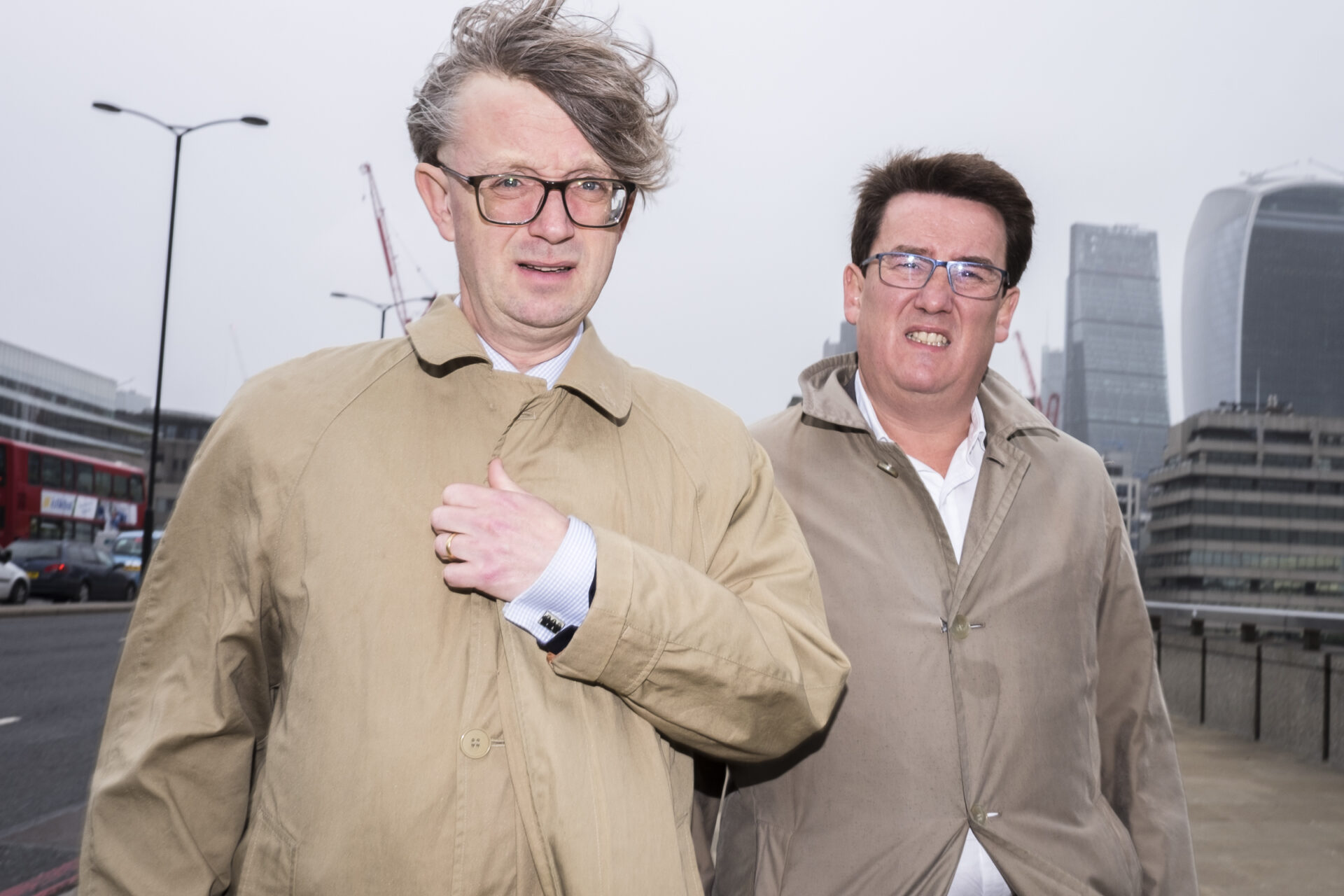

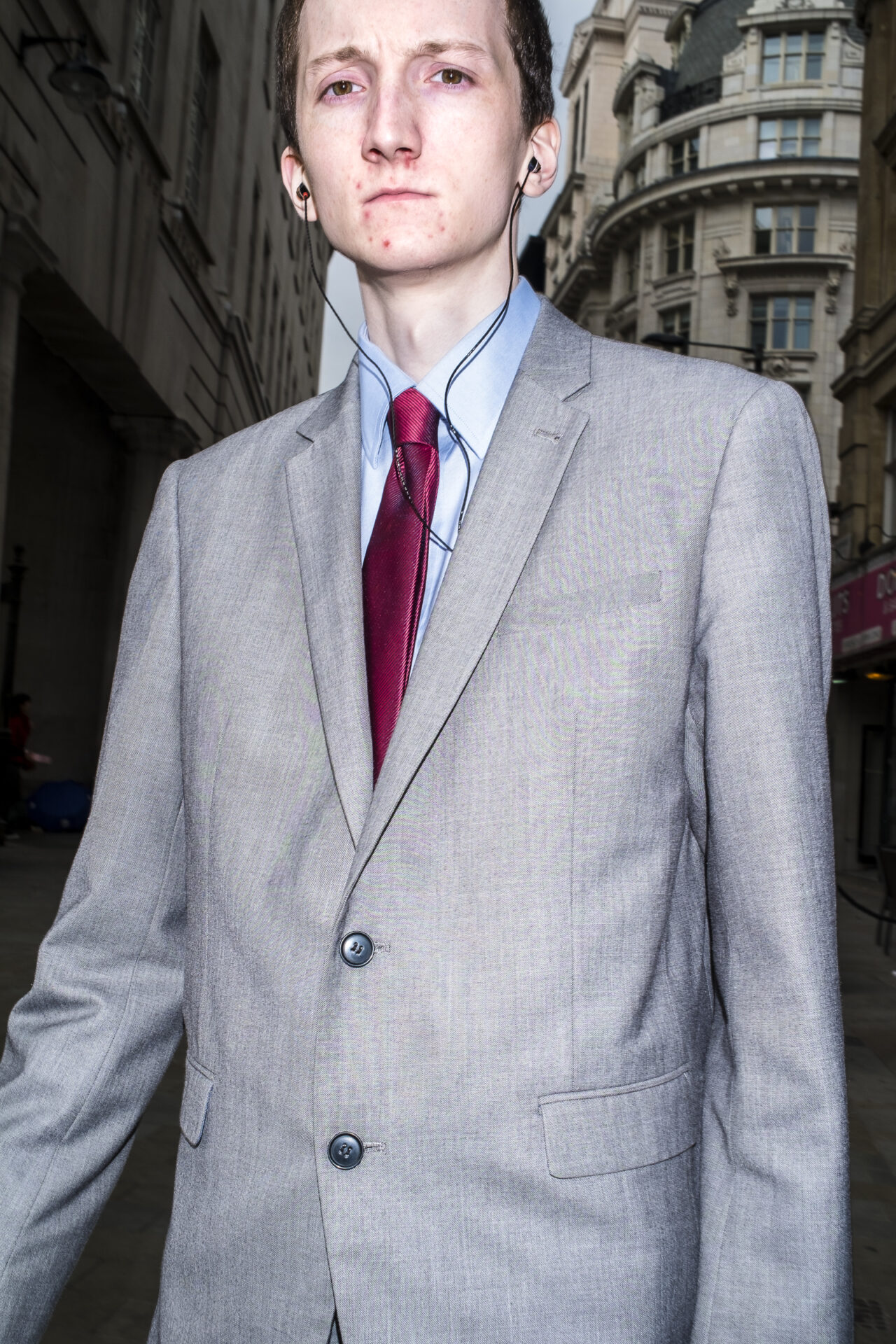
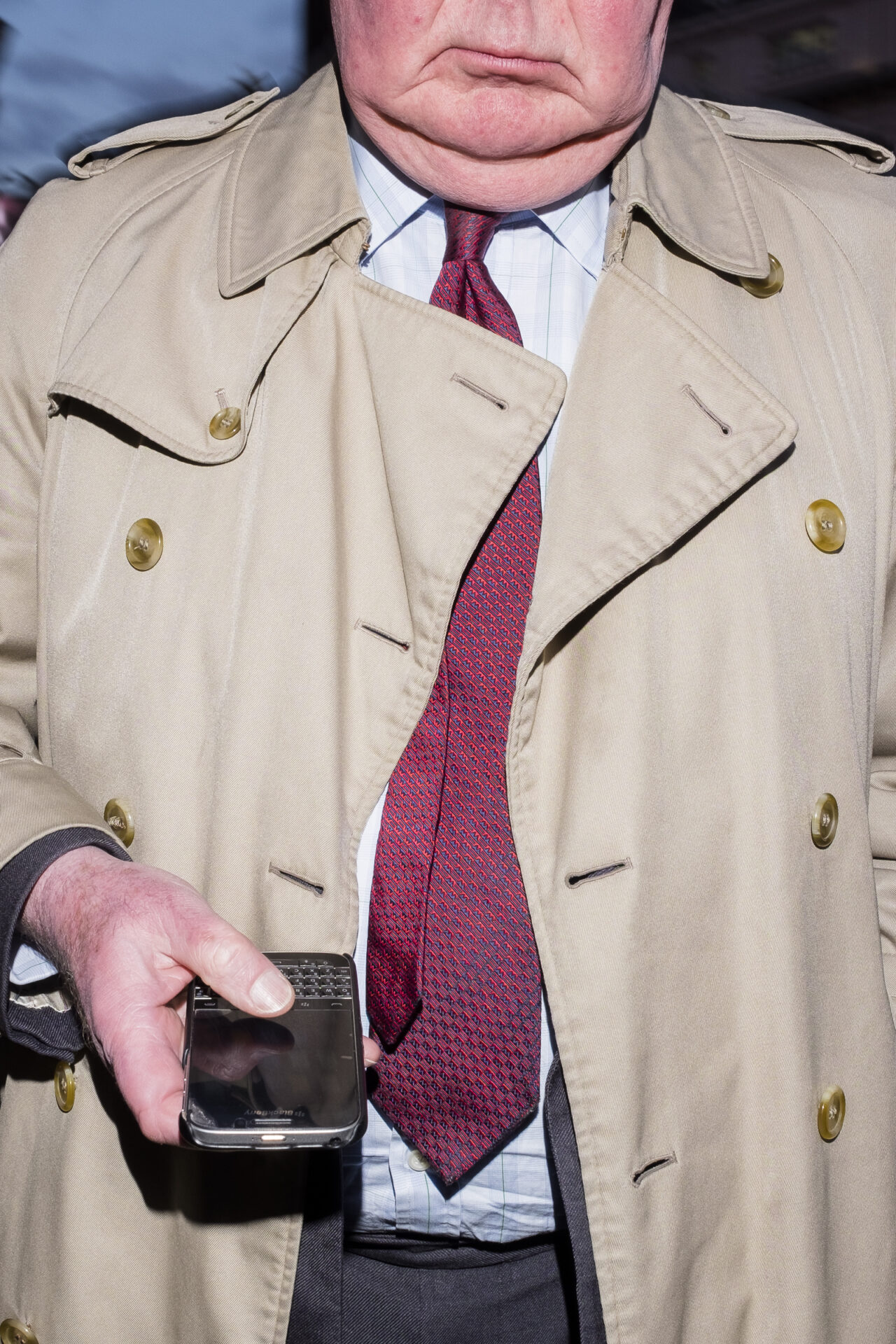

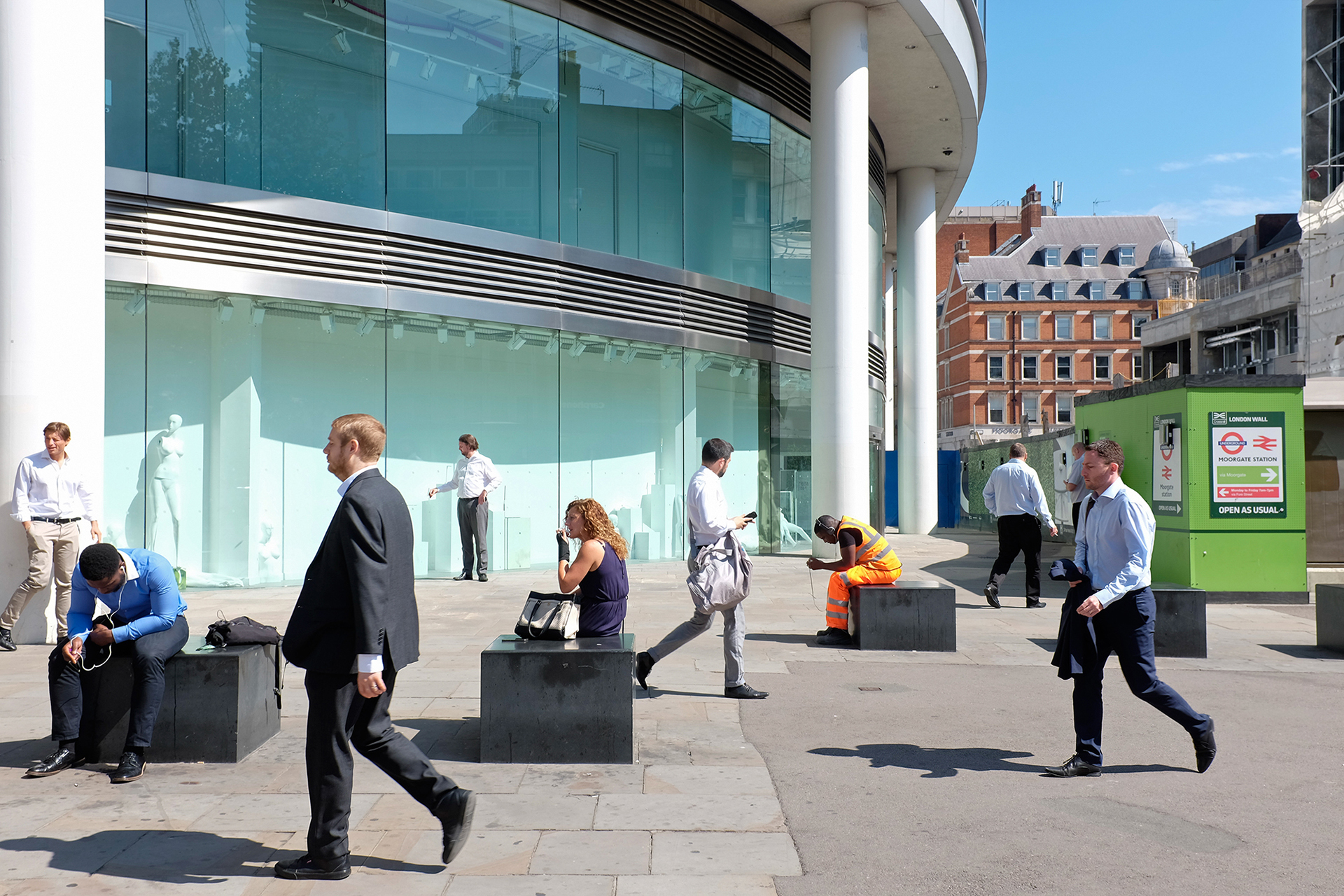
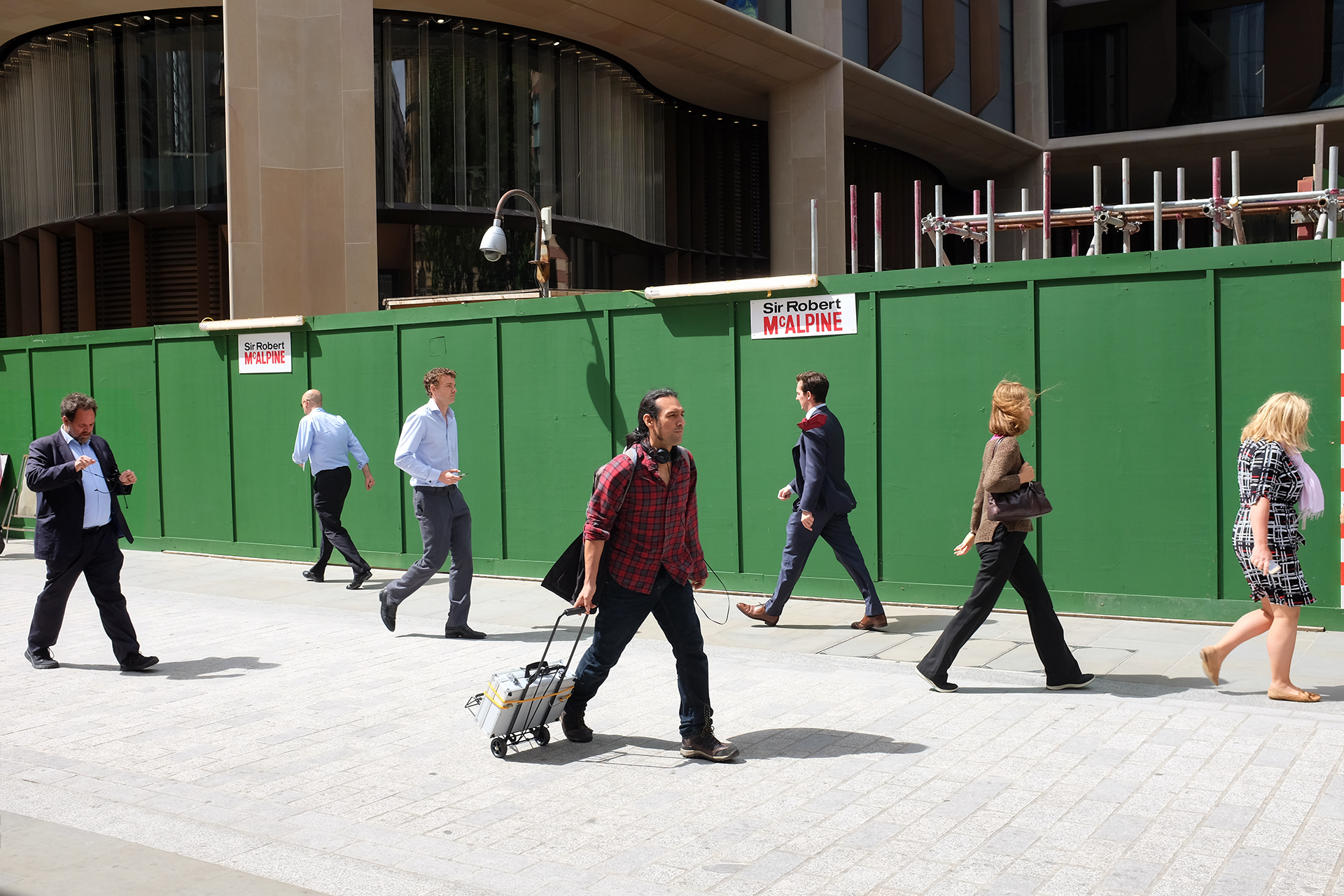

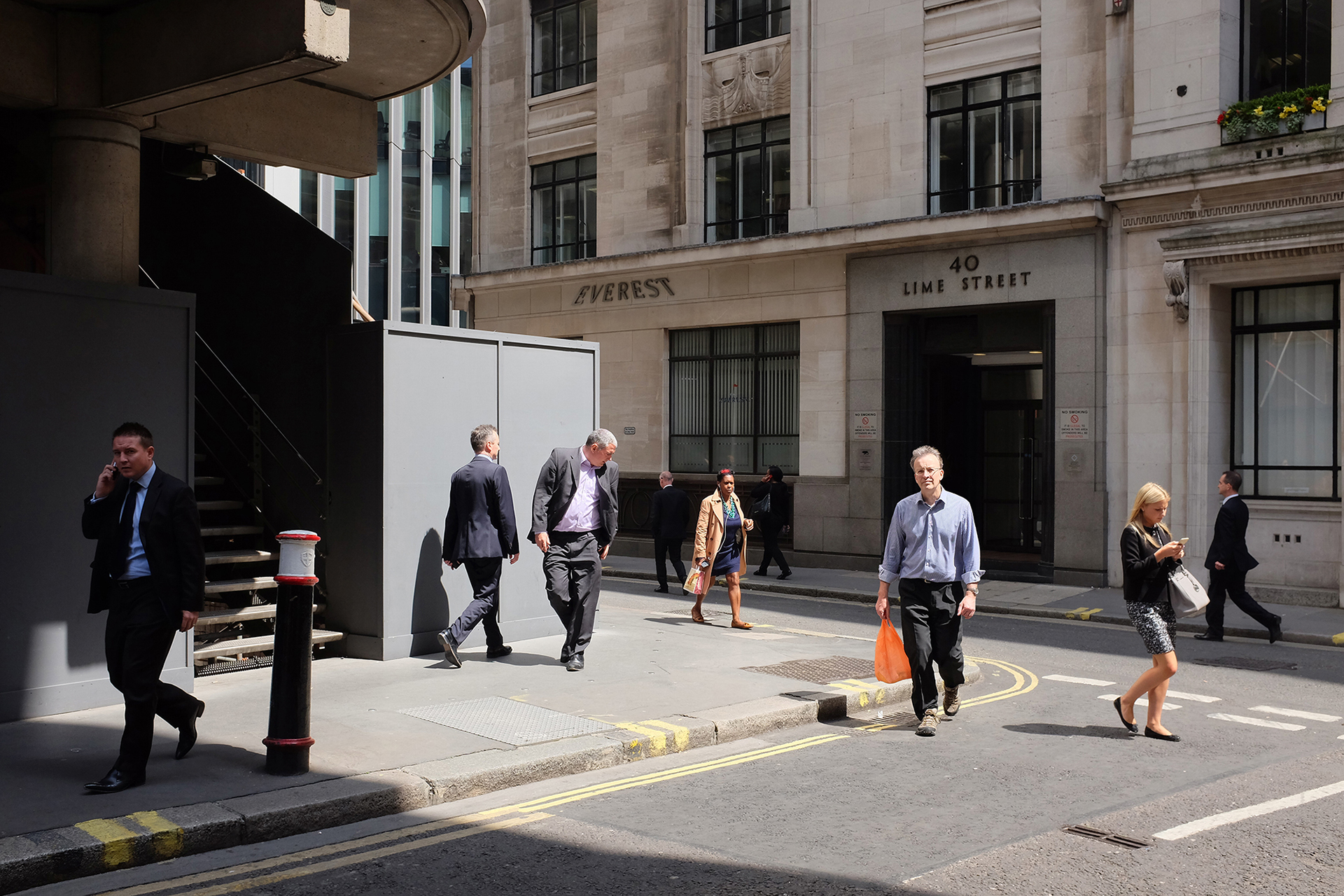
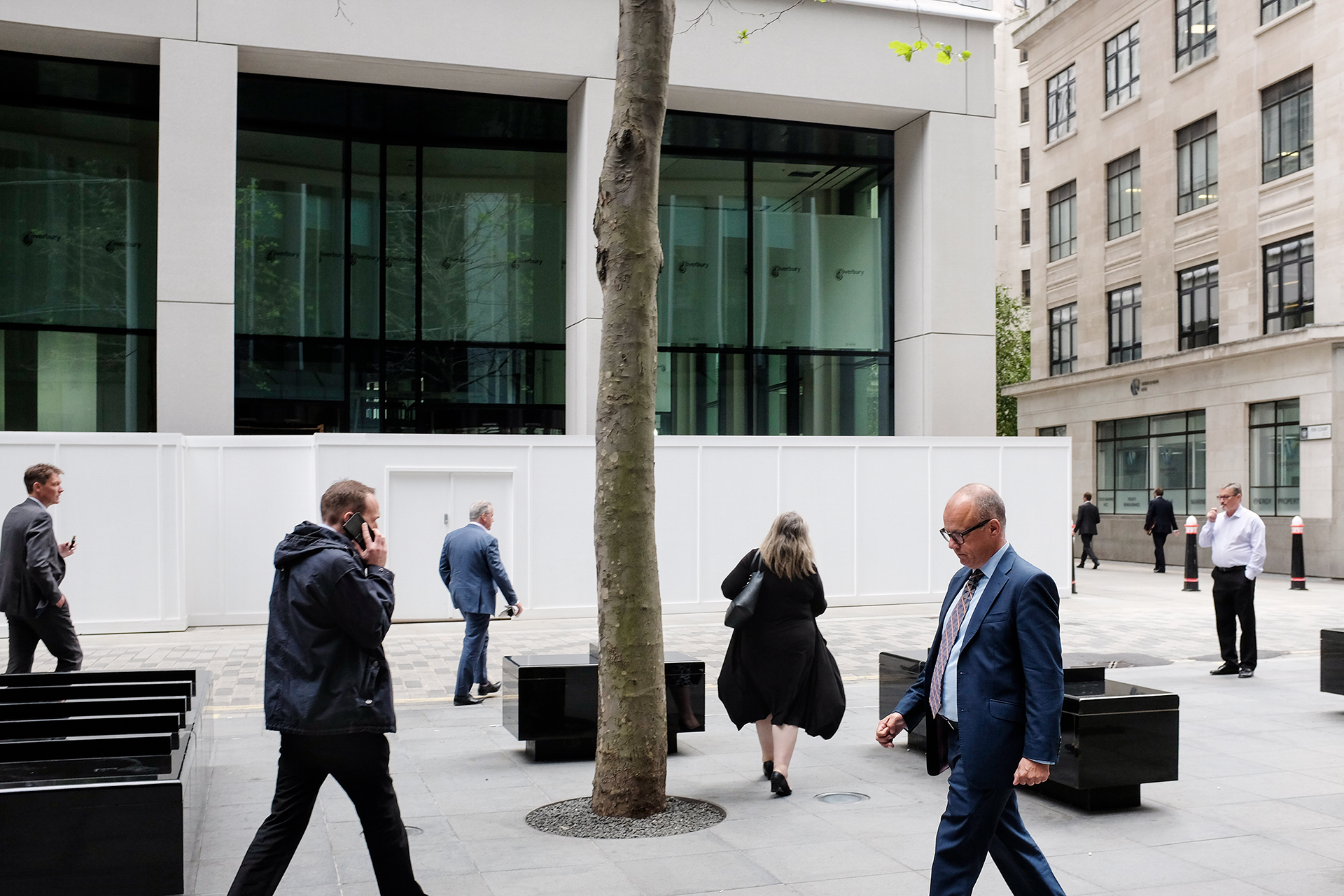
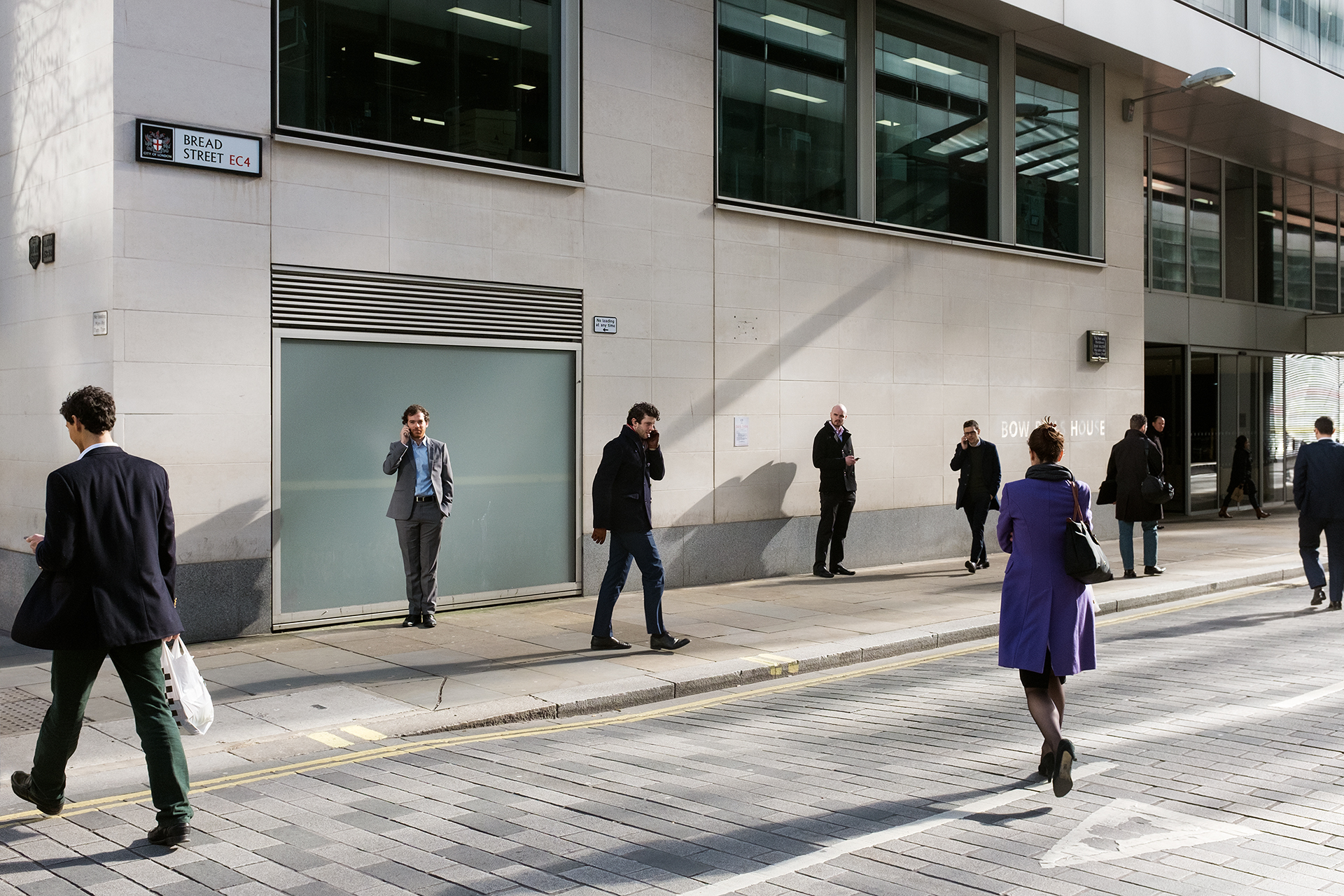

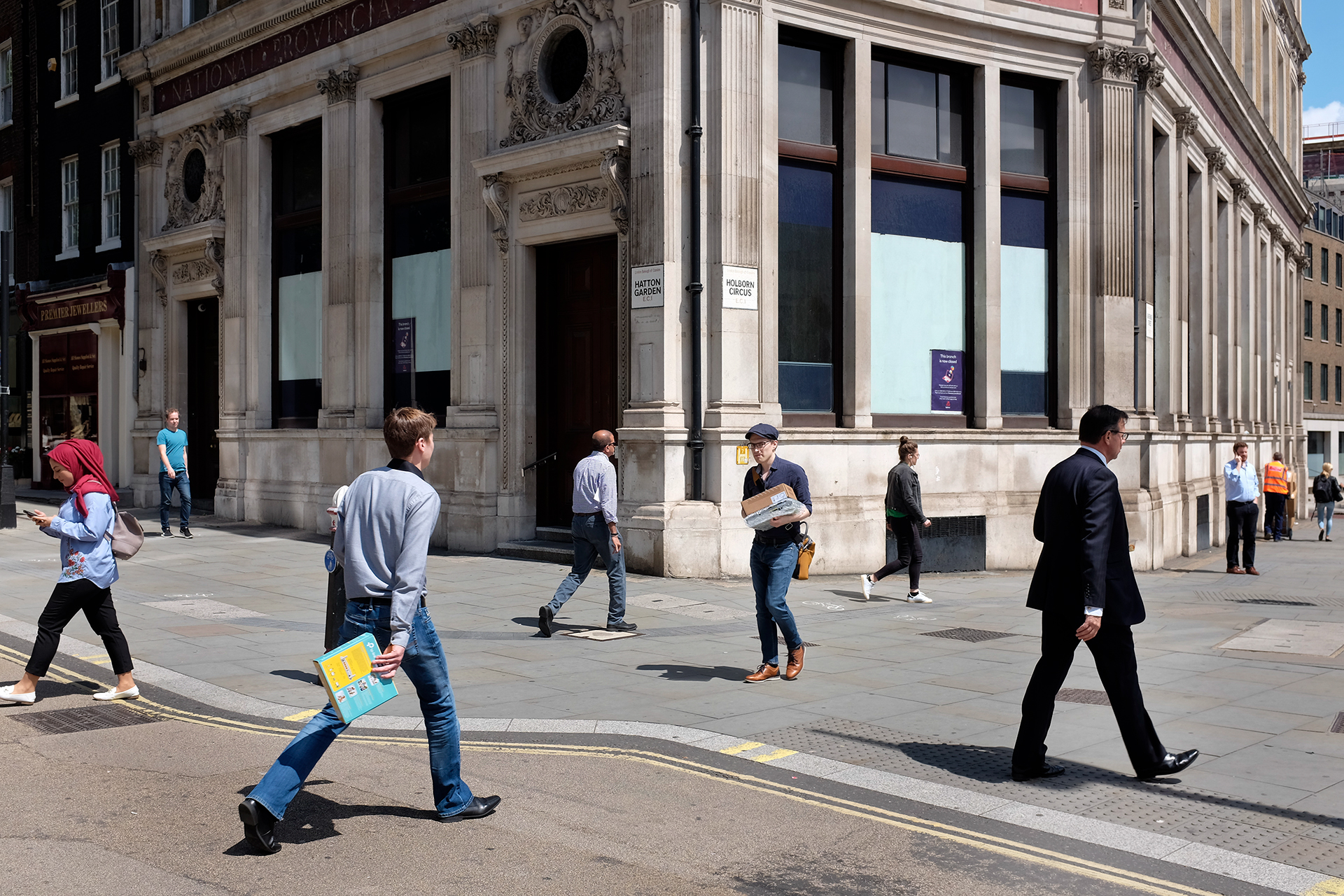
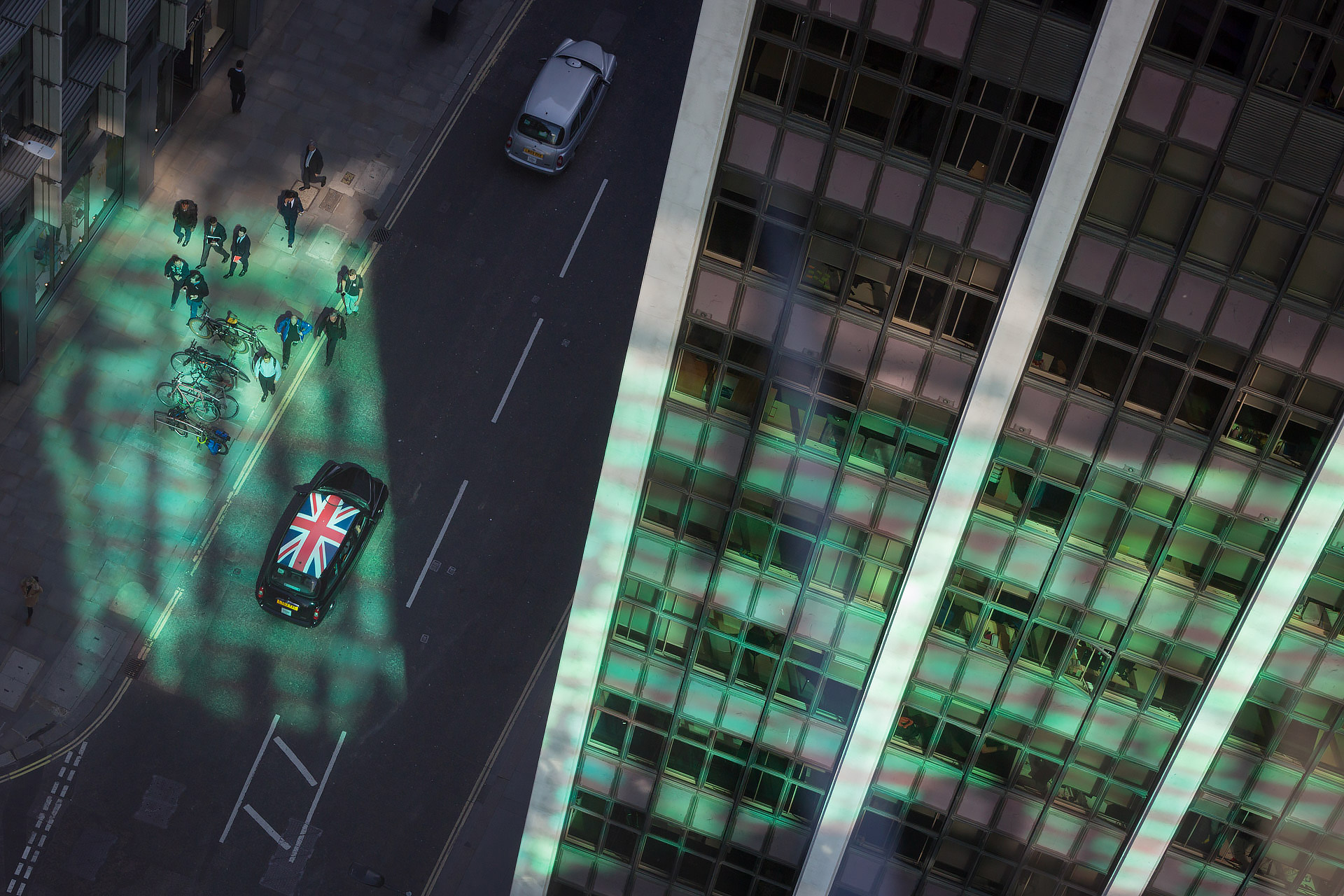


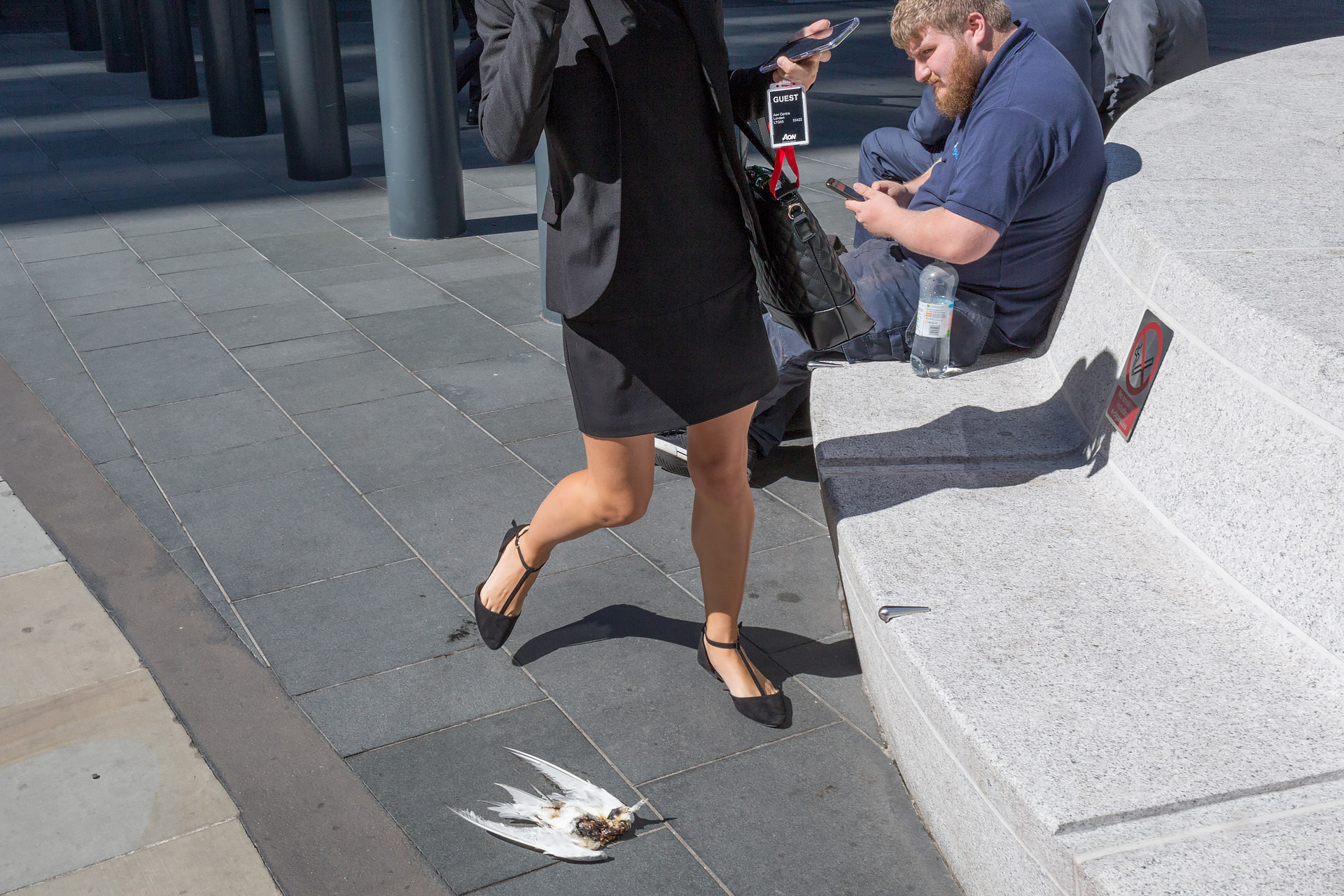

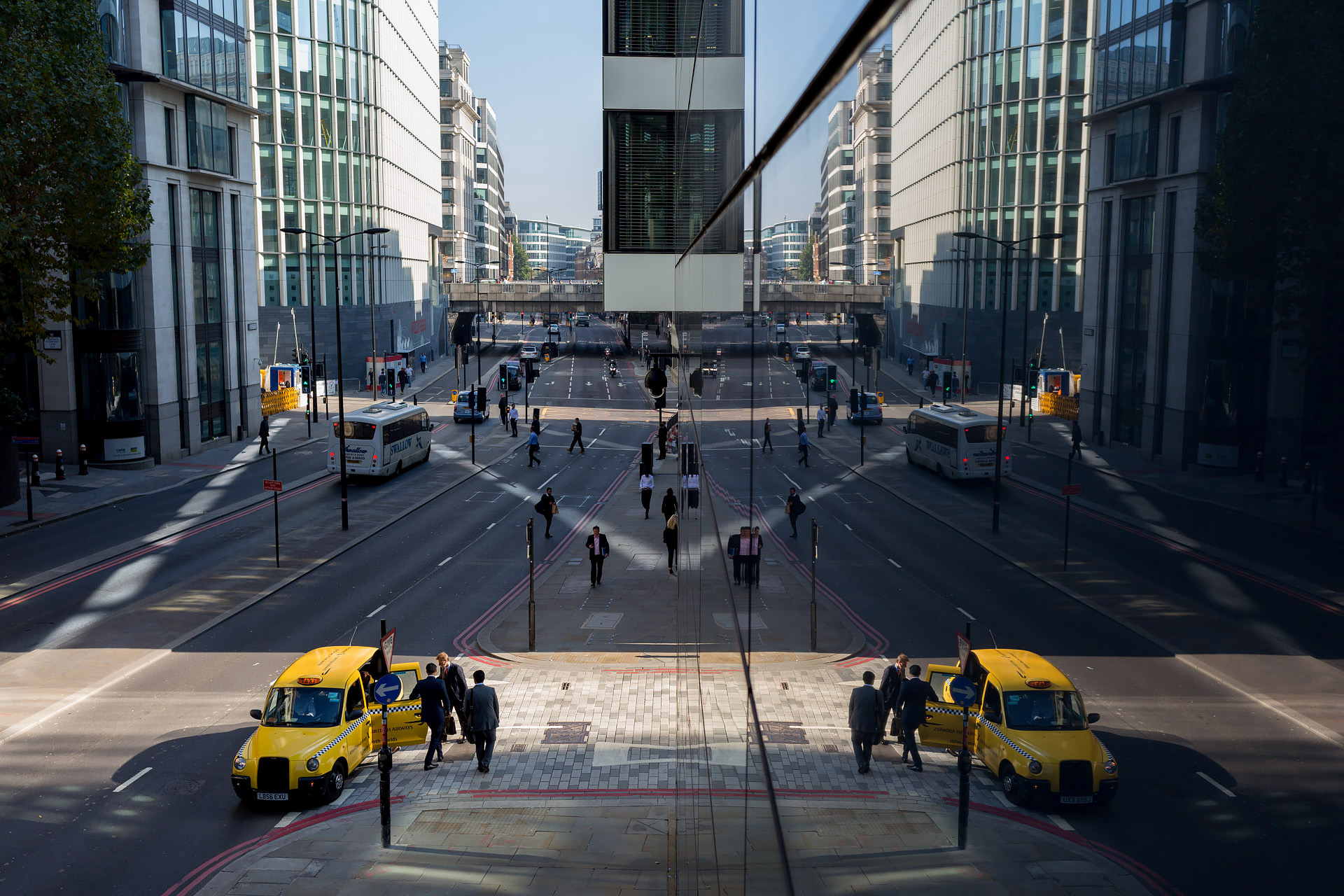



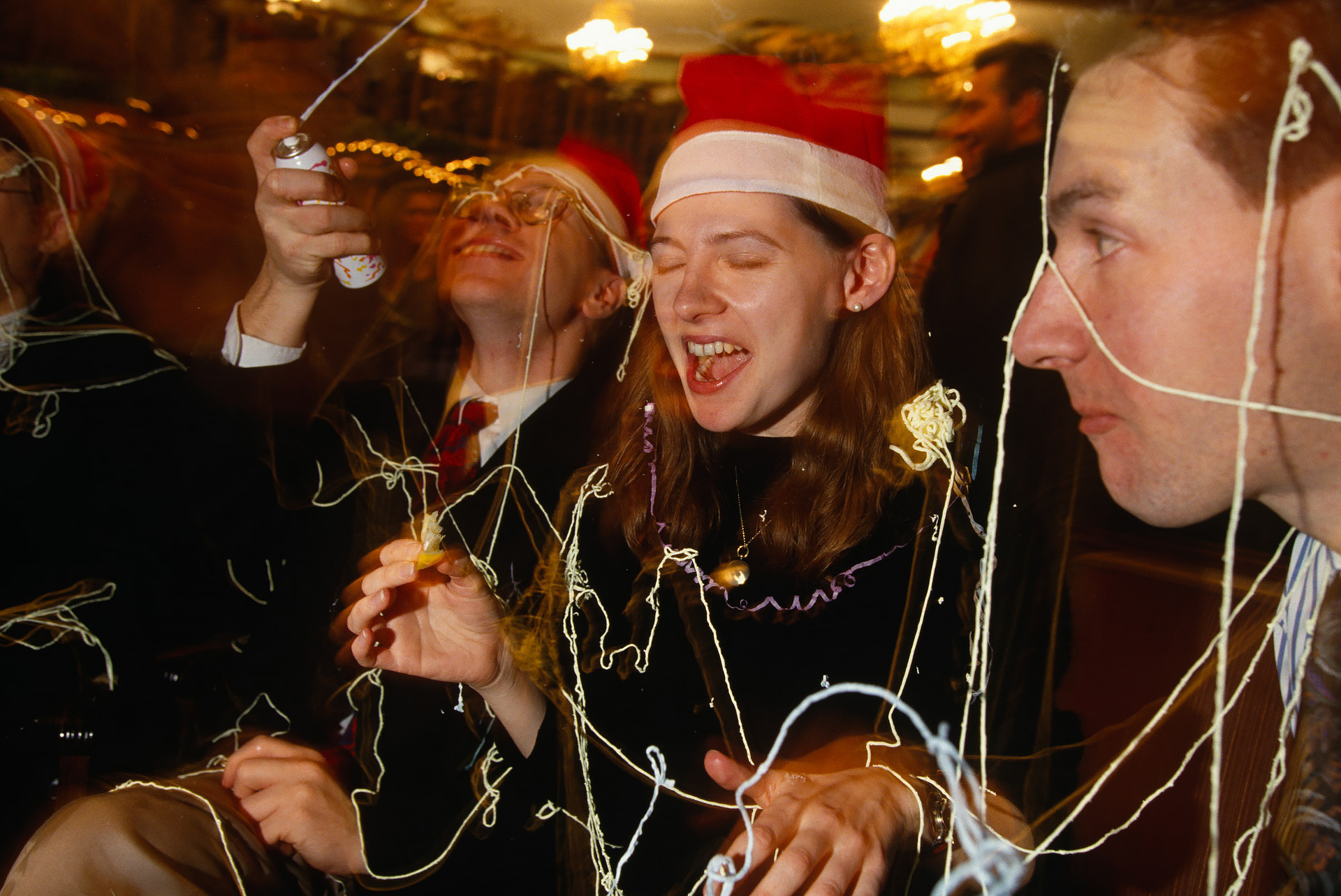
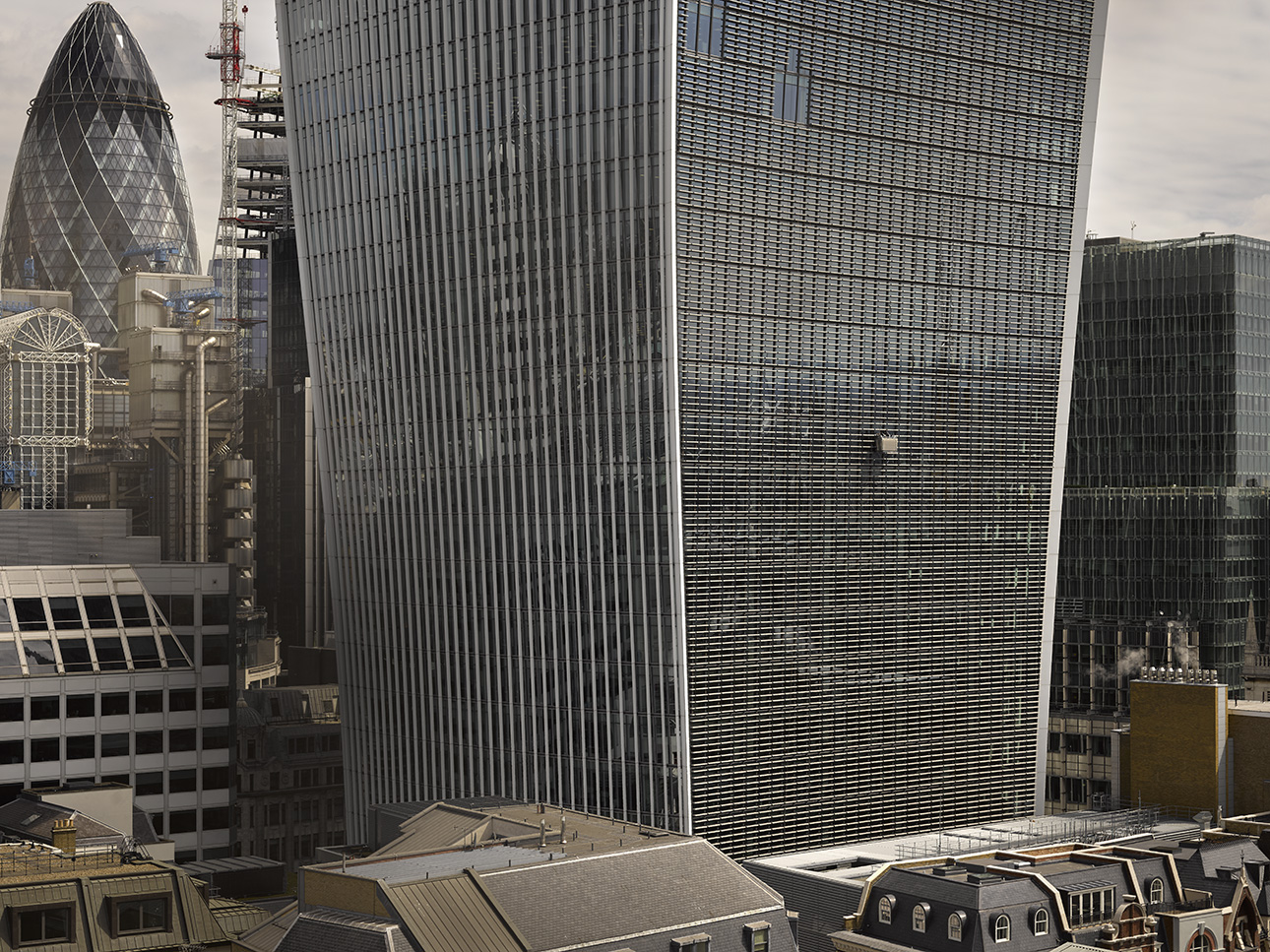





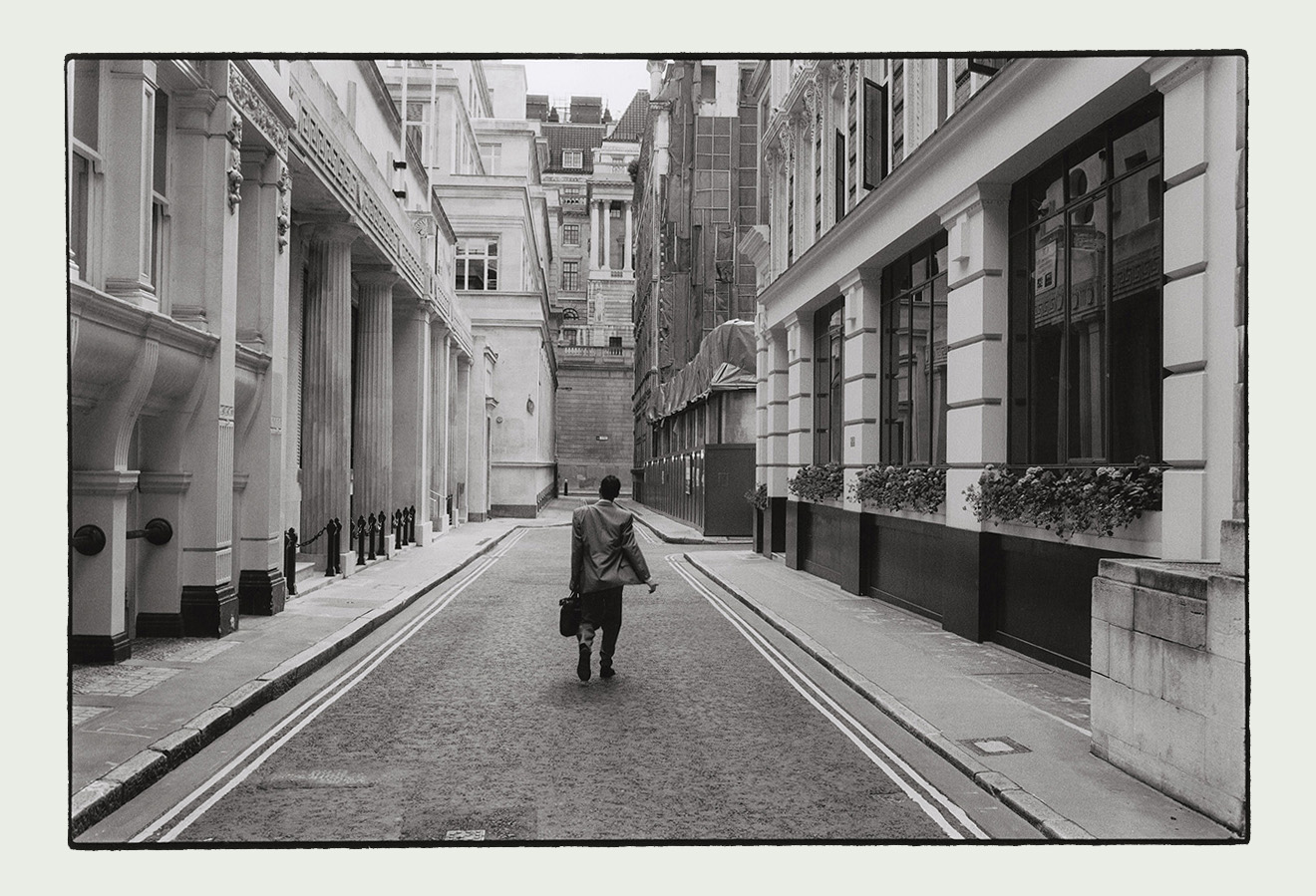
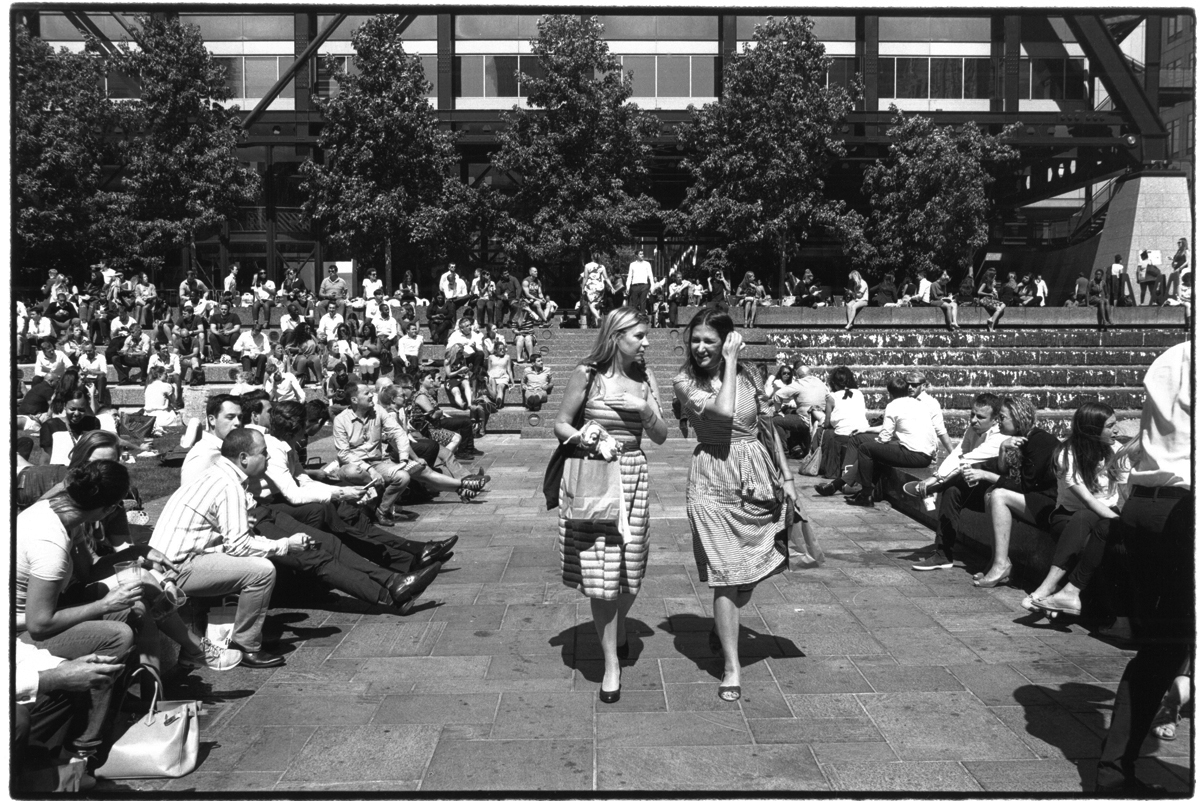










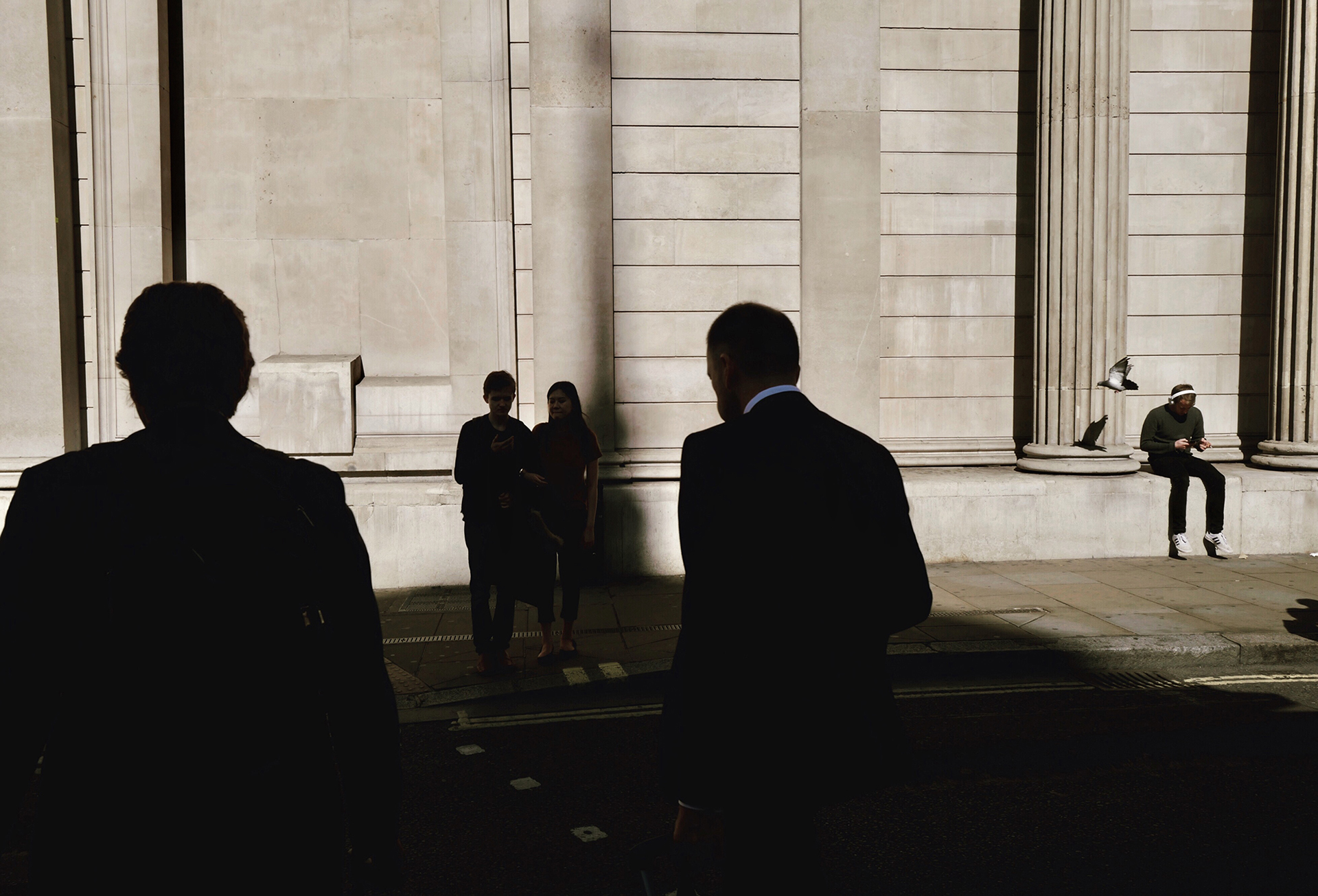


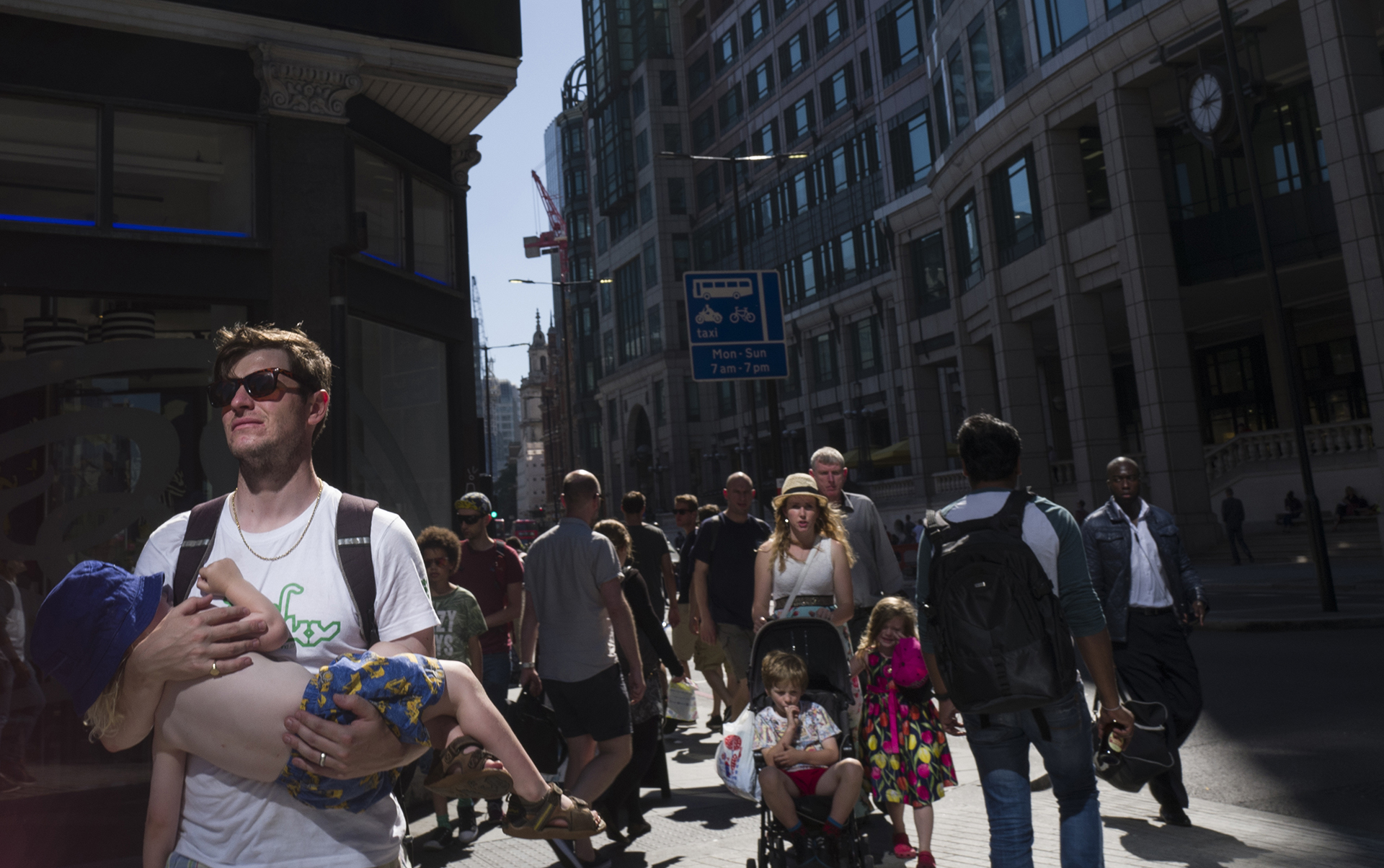
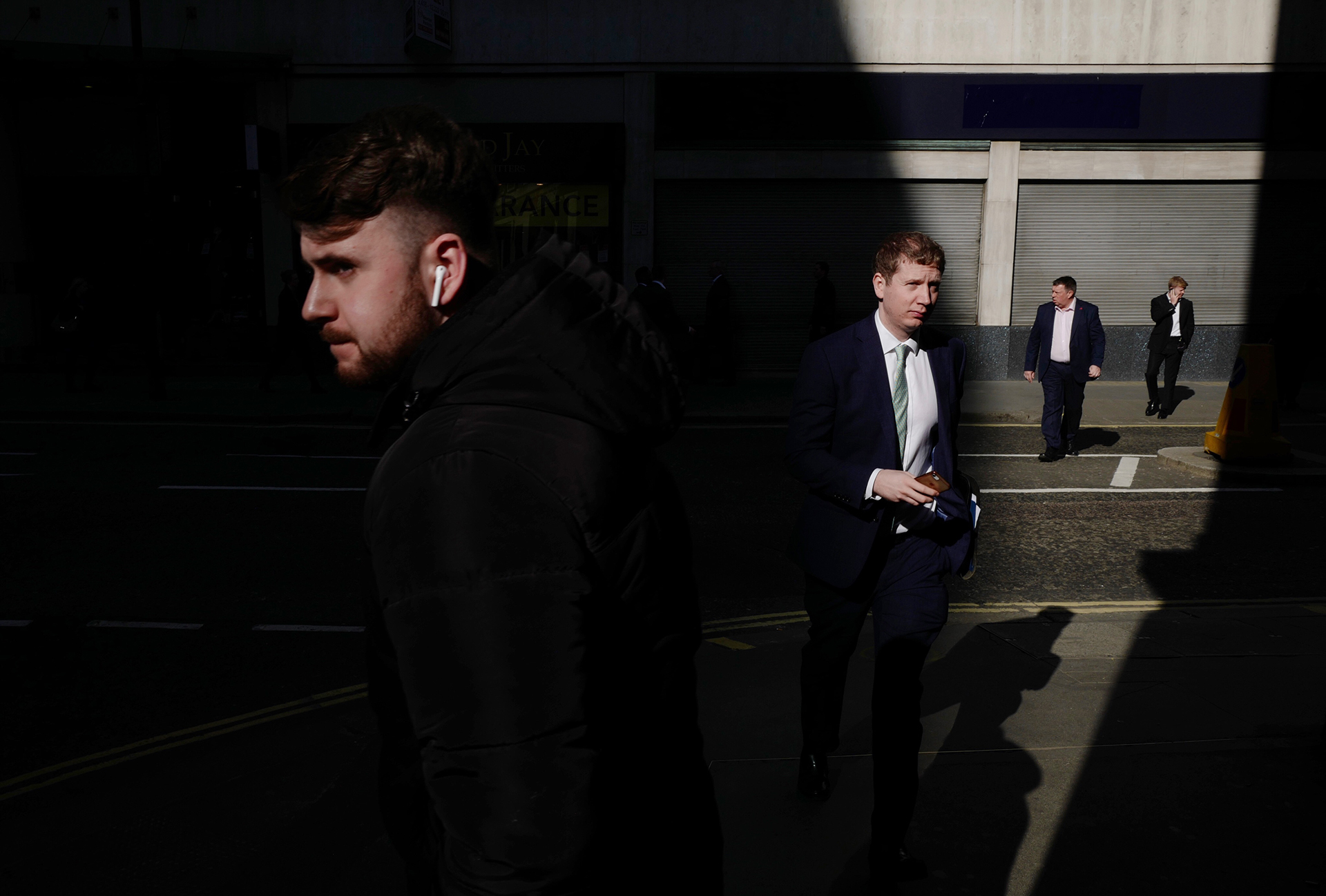
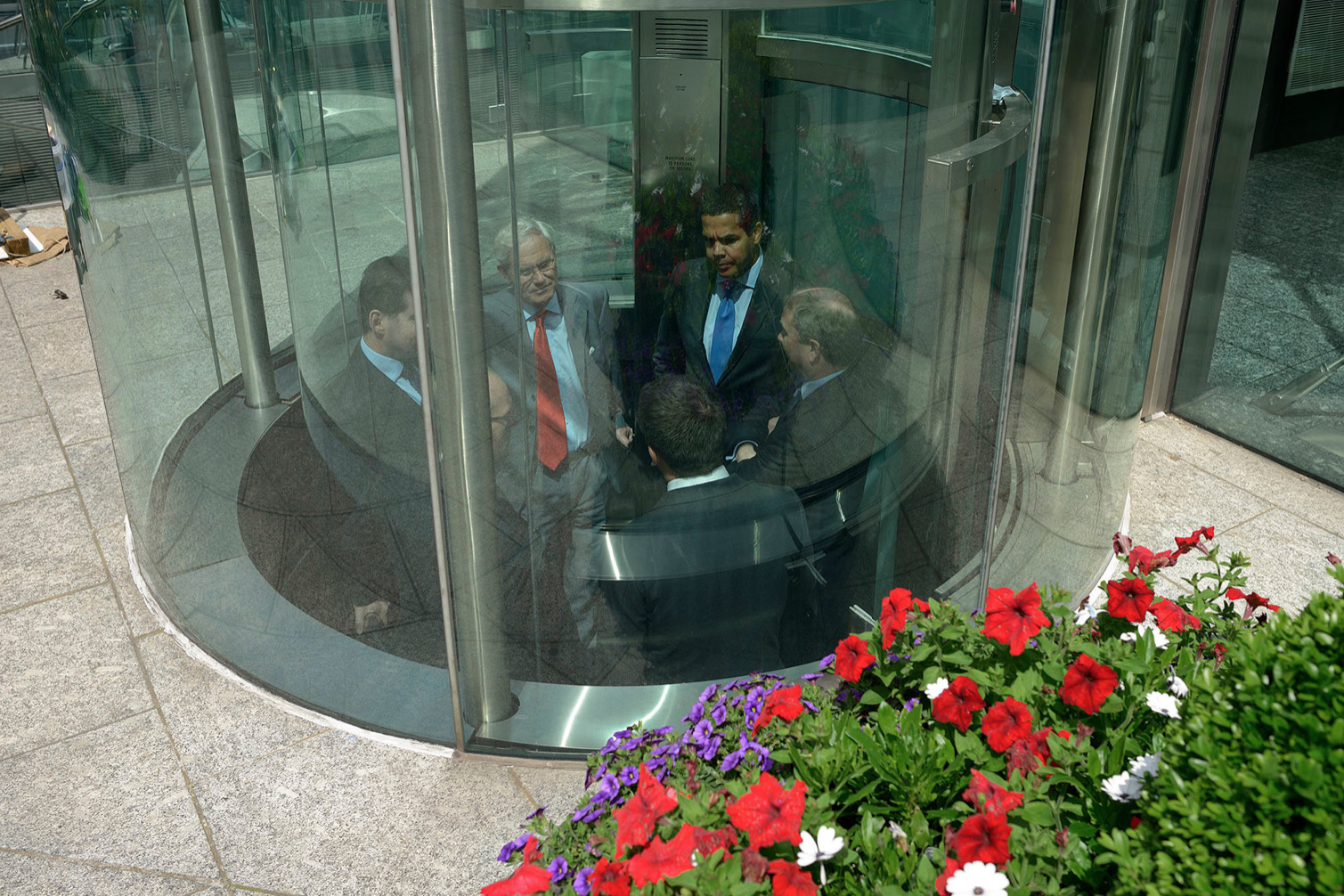

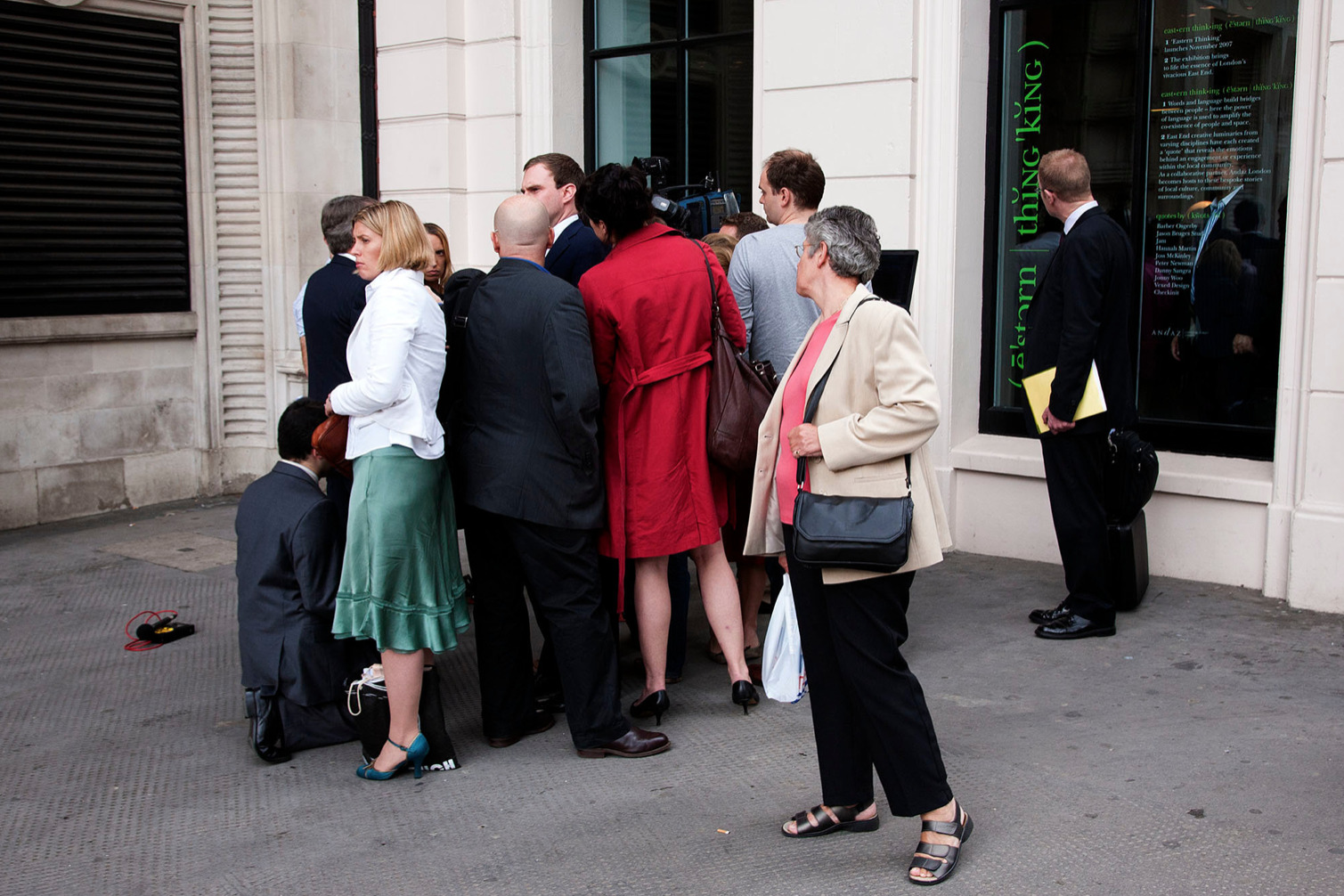
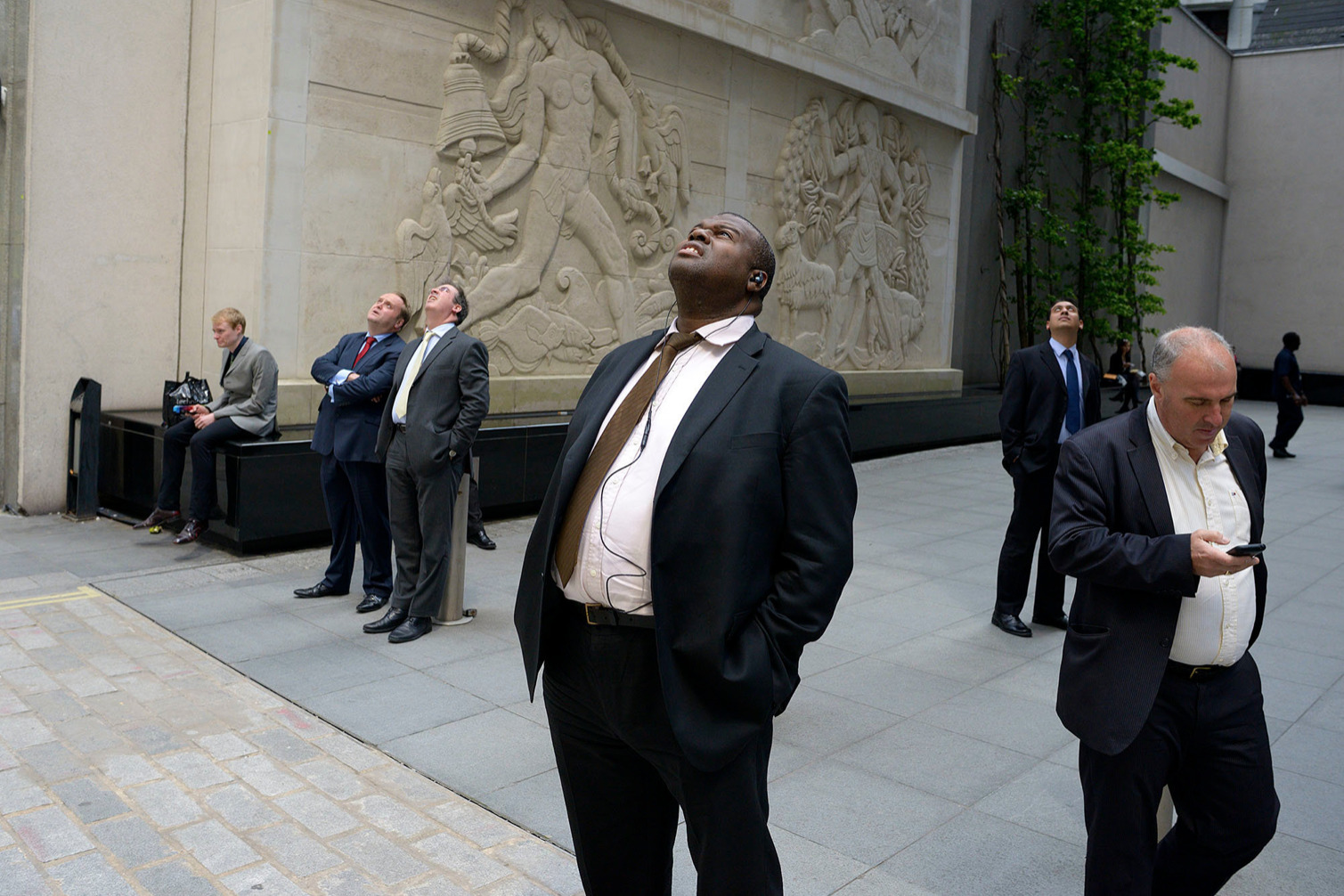



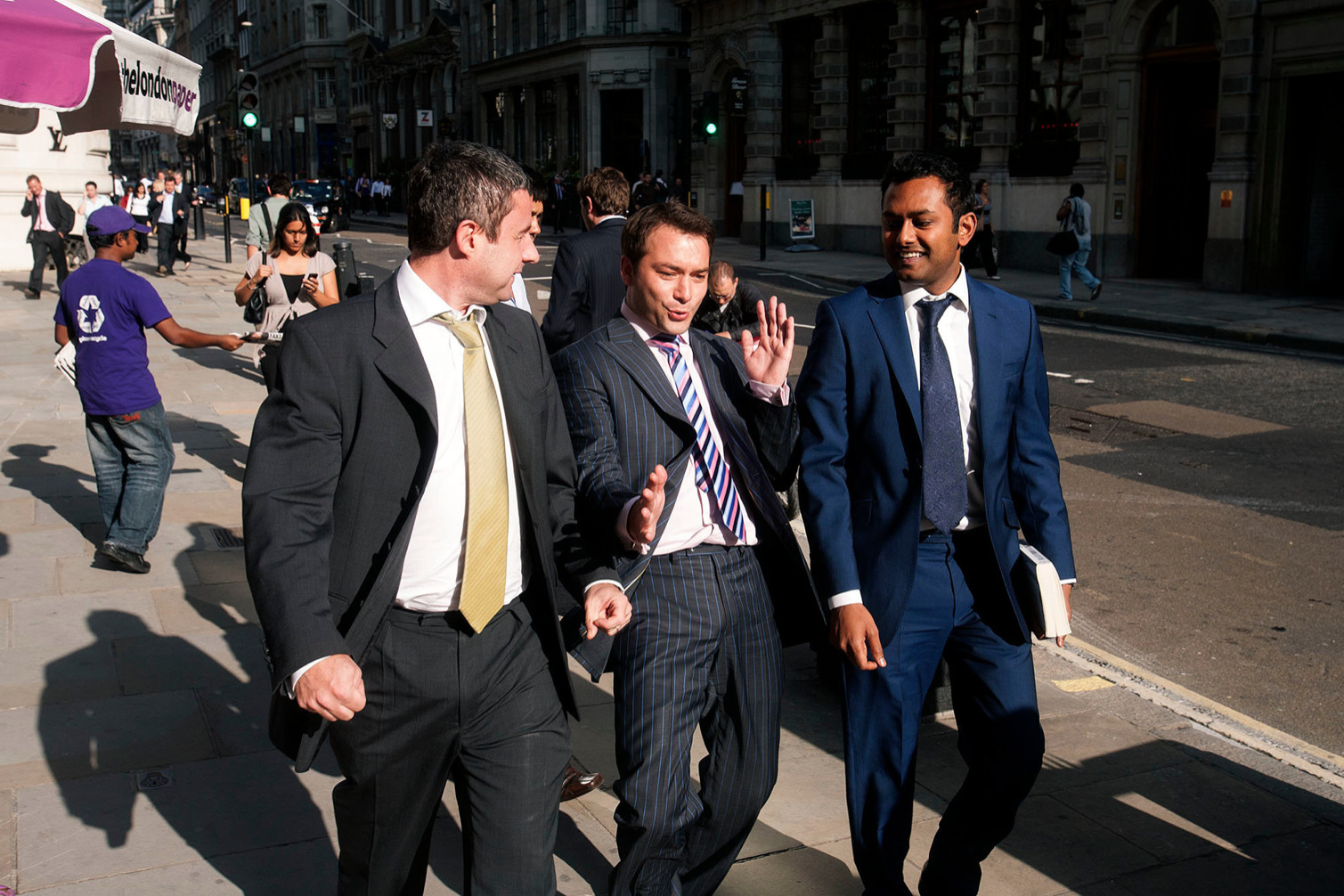
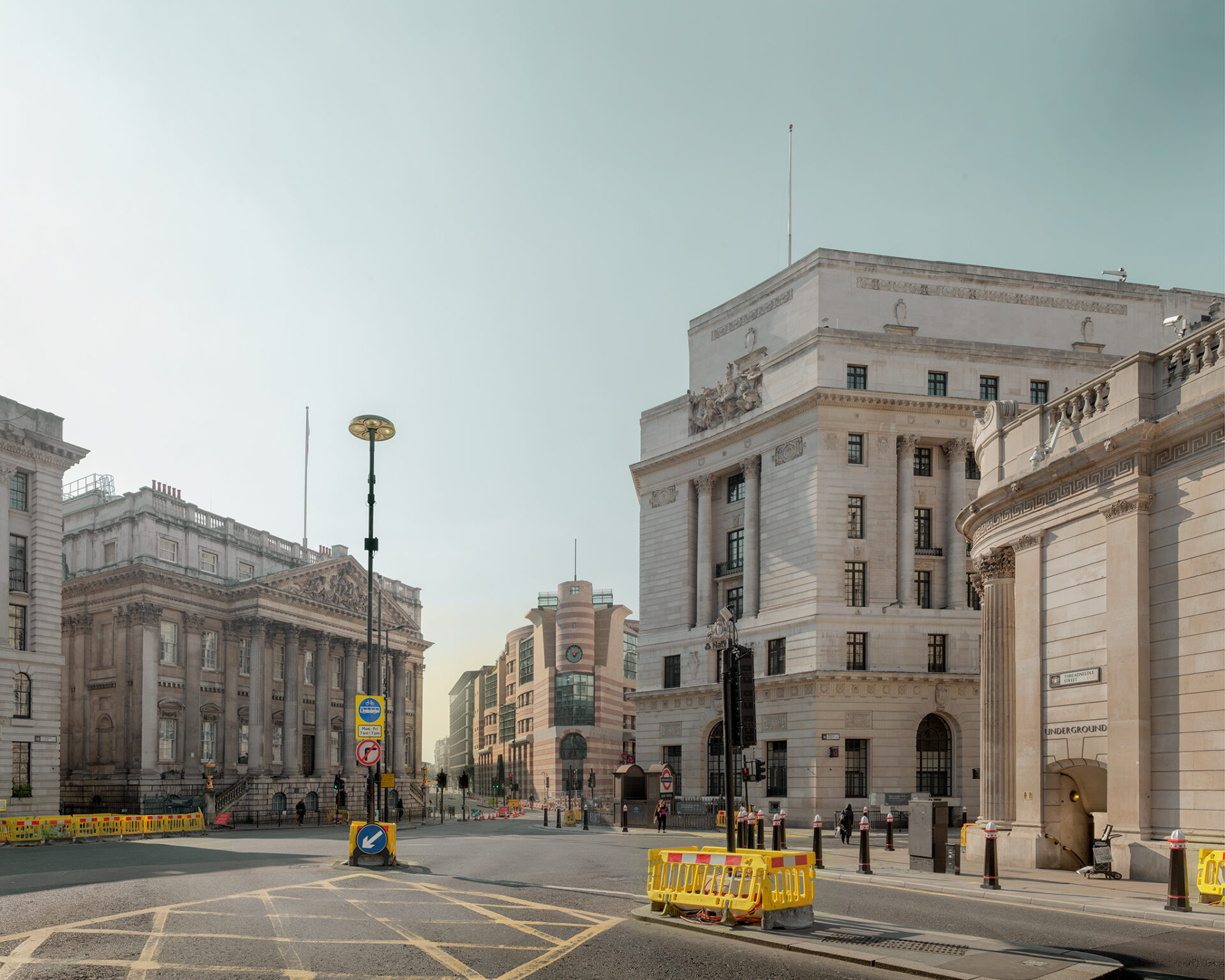
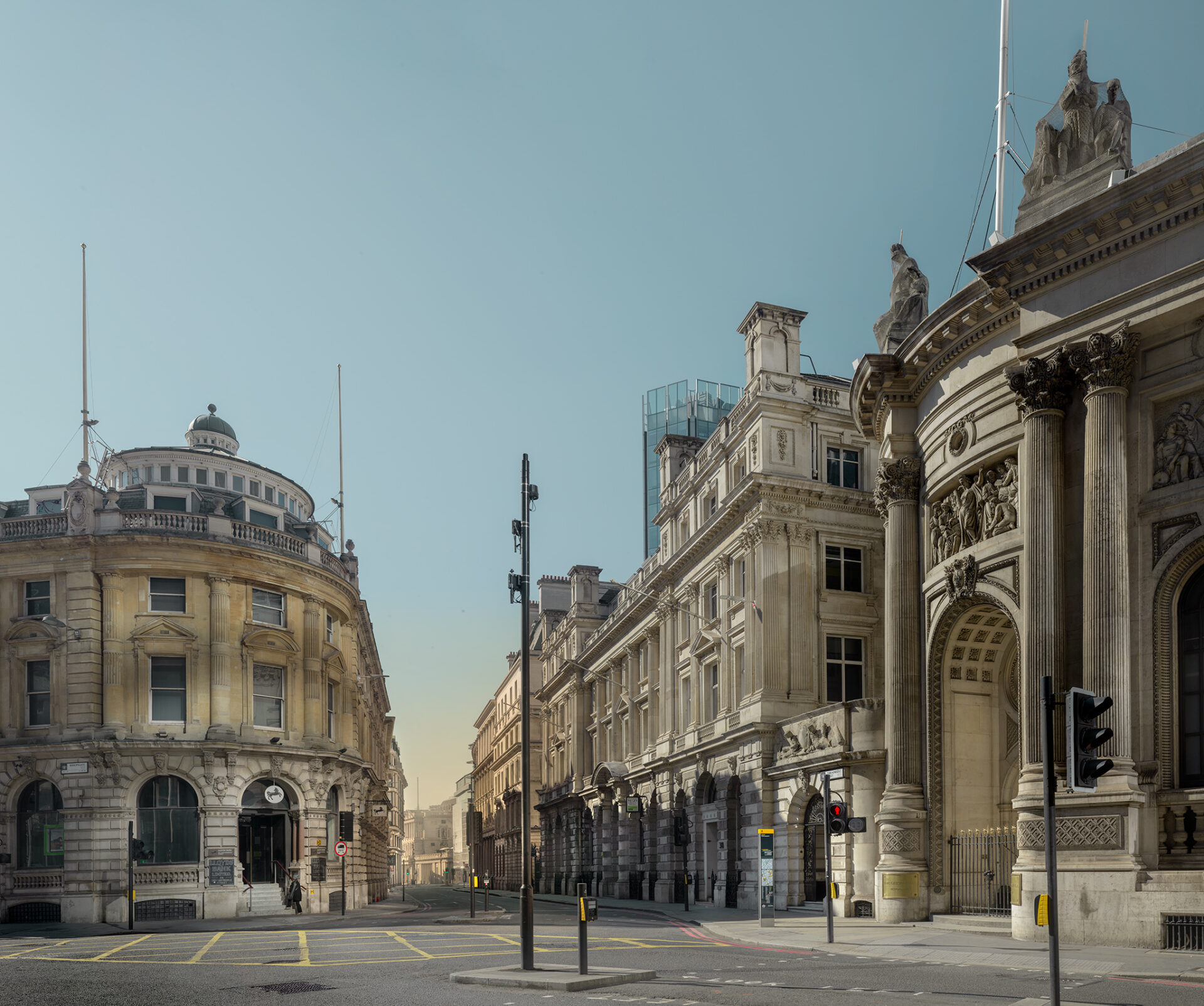




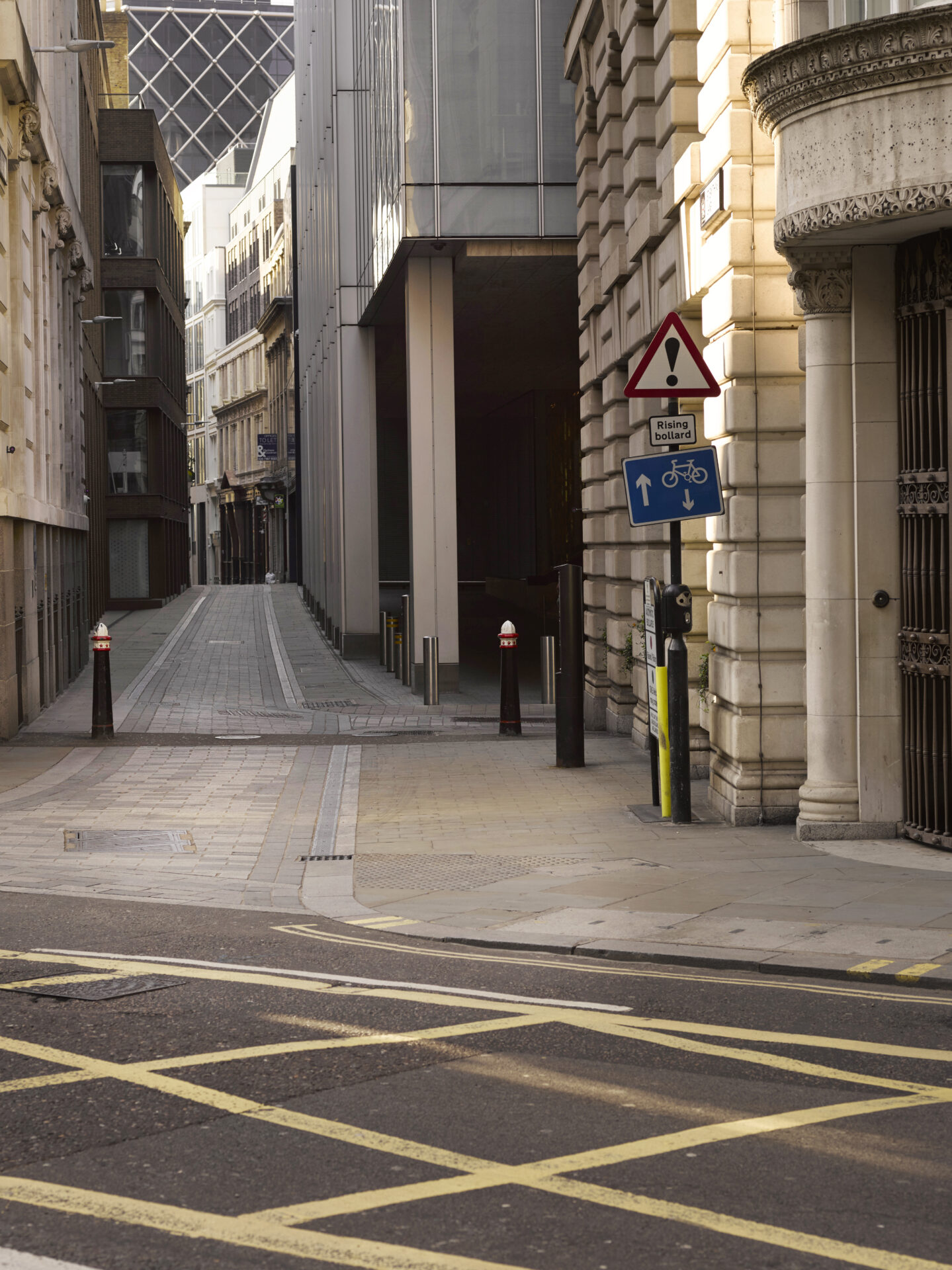
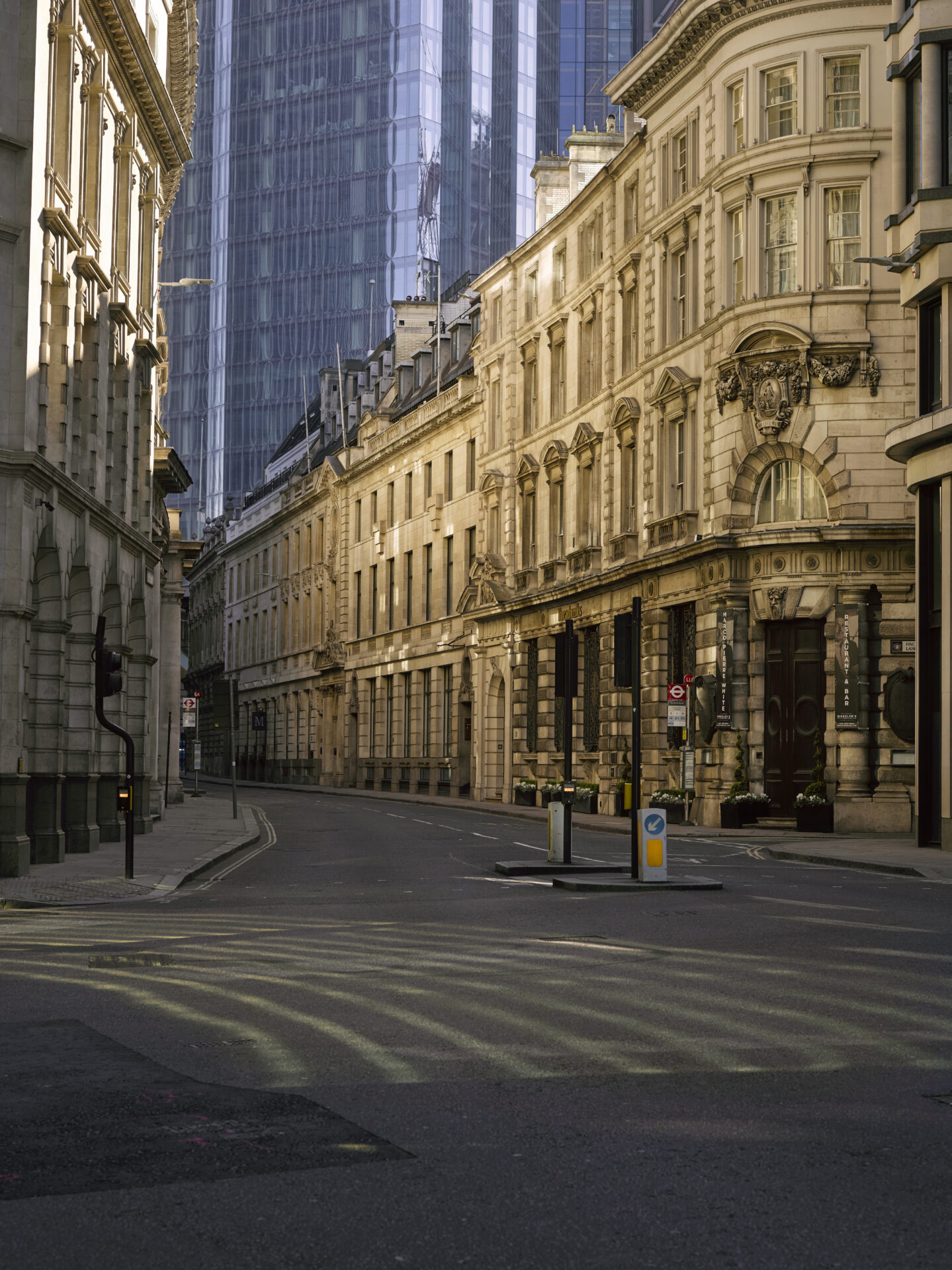




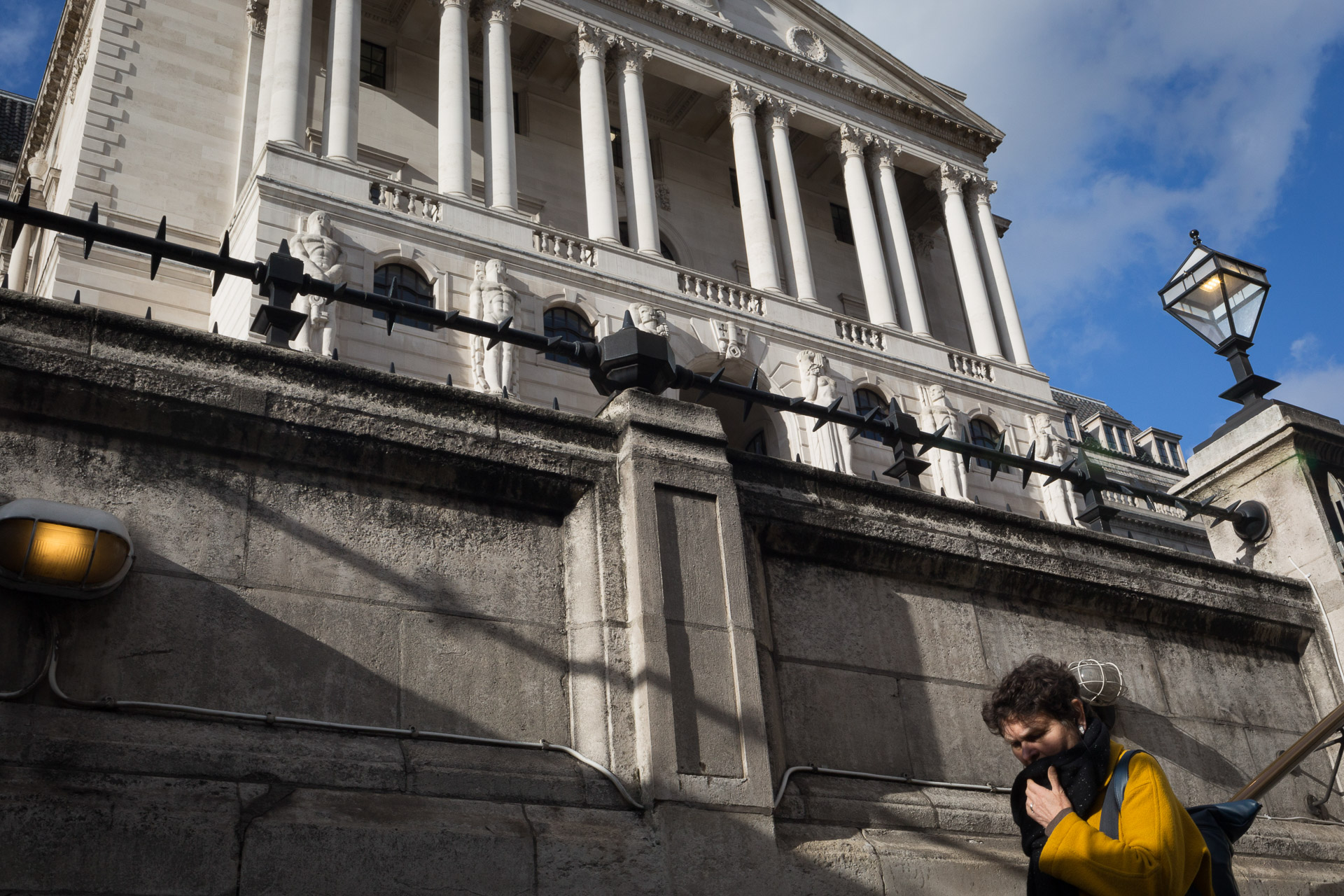





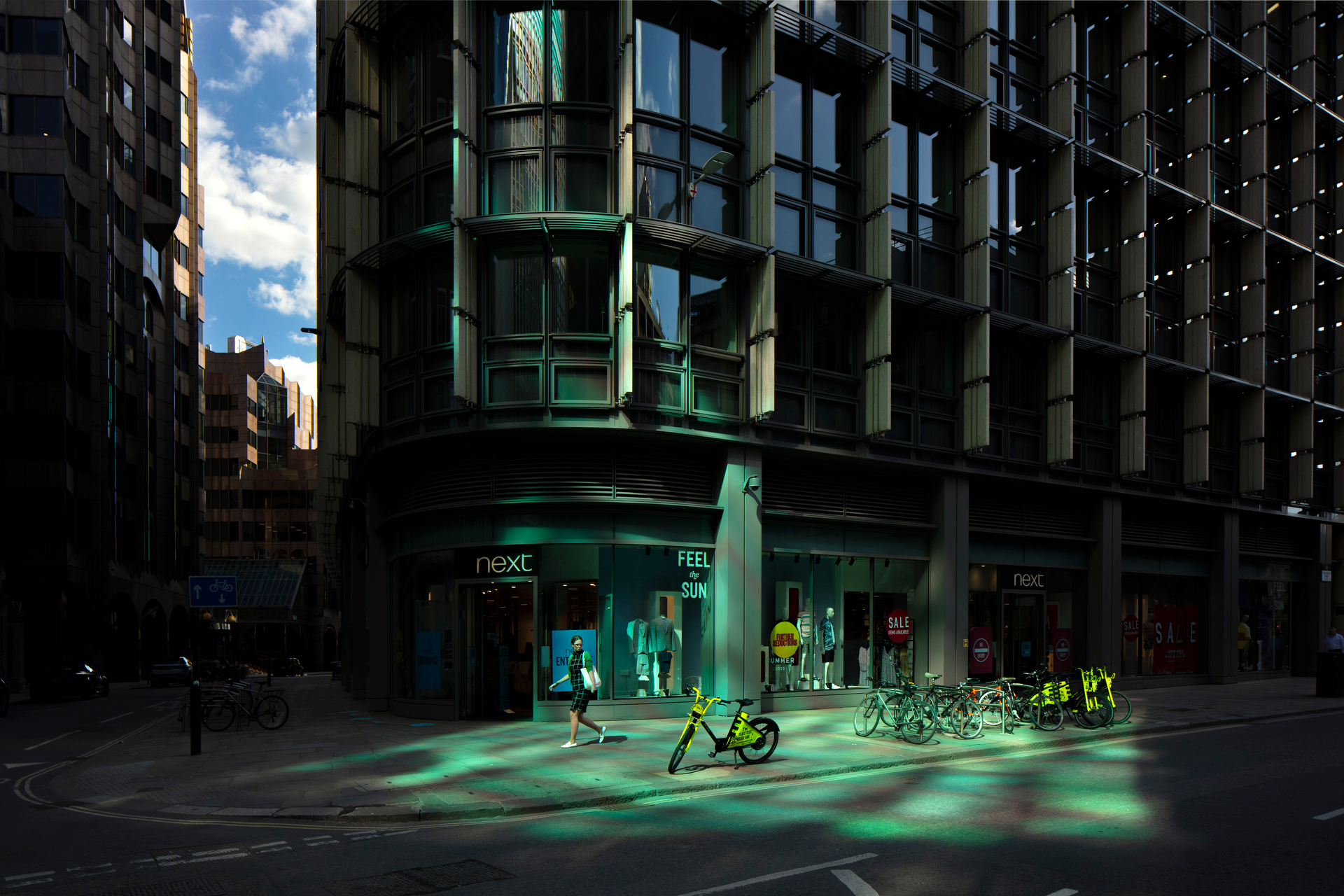

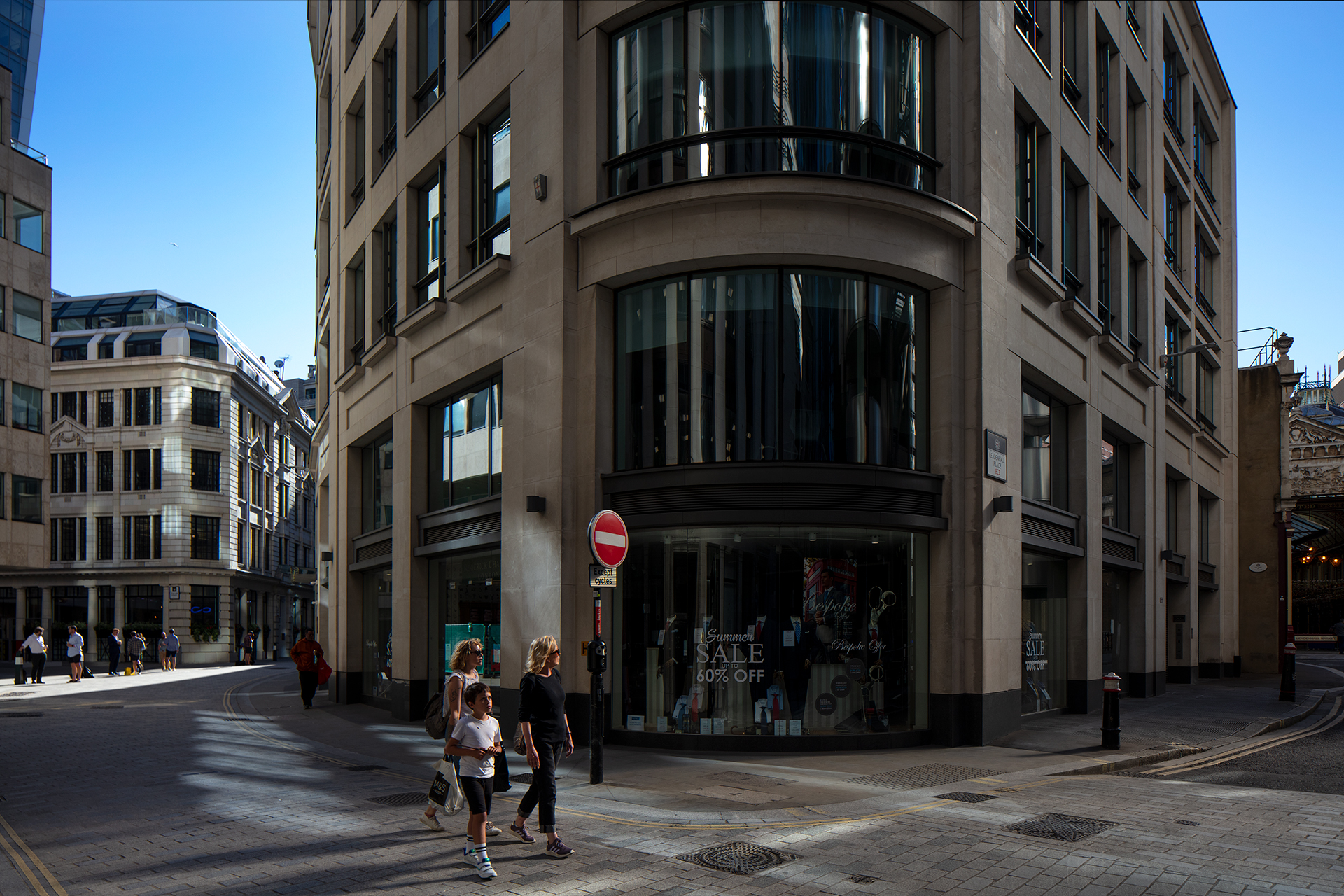
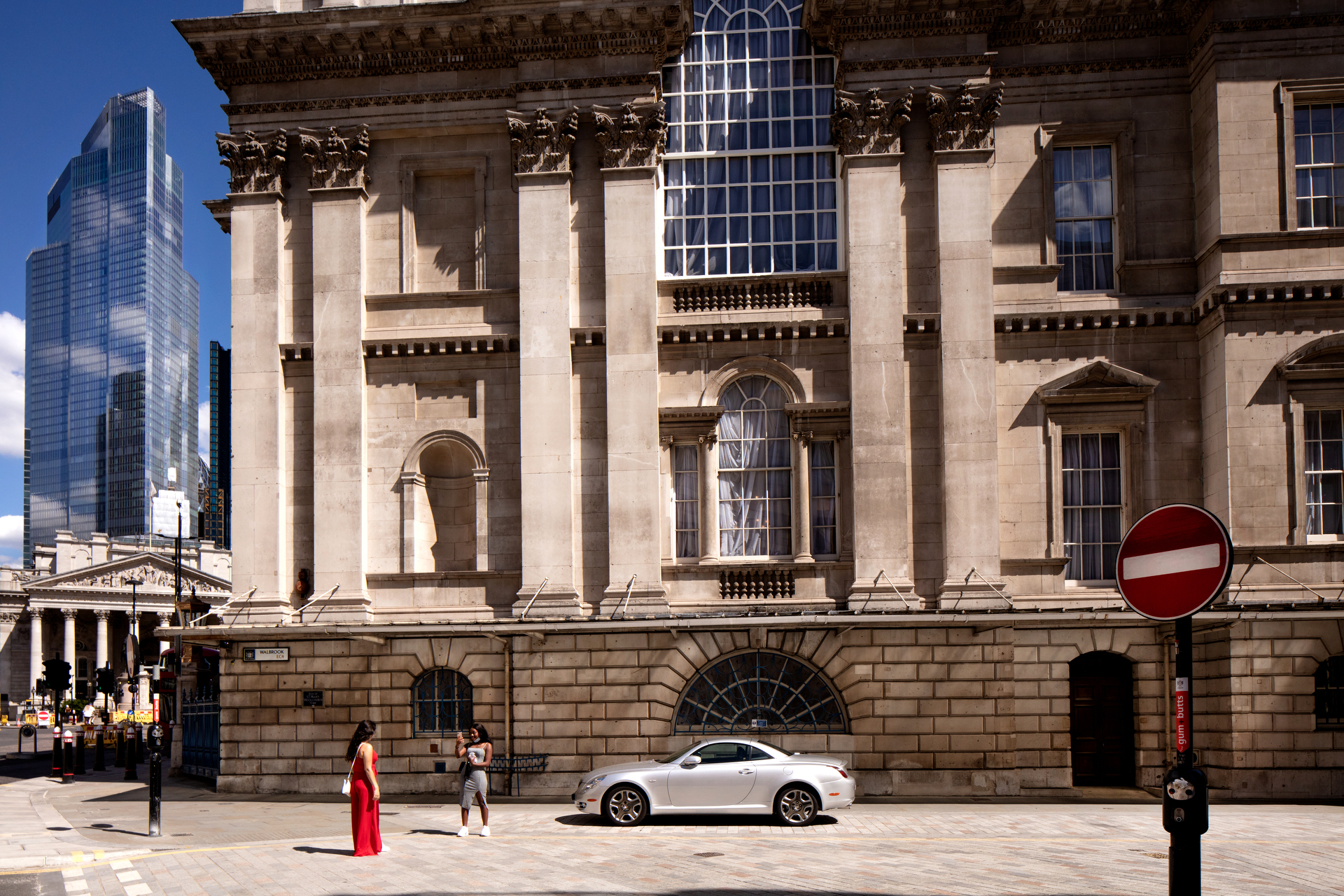

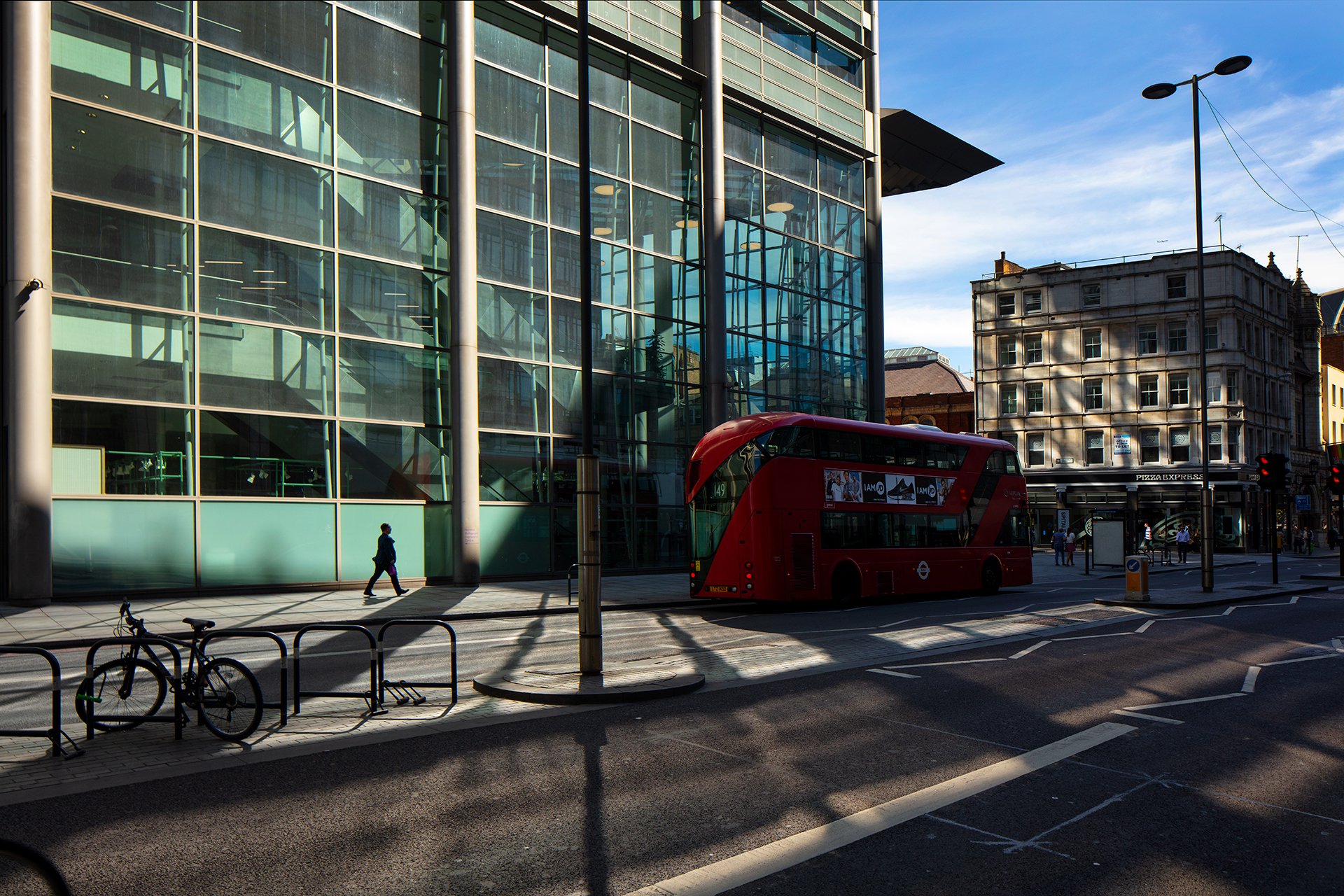
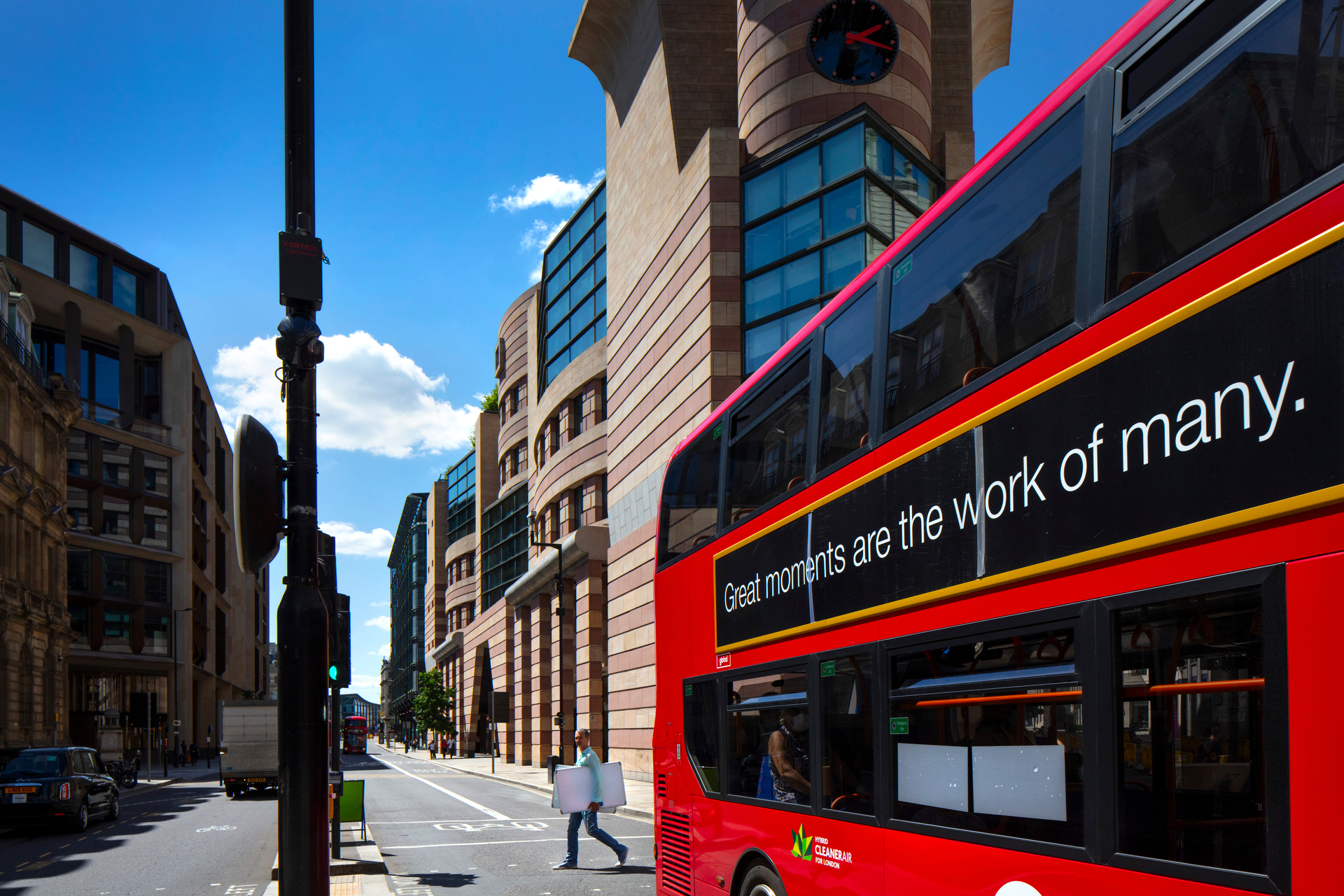
20 Comments
What a stunning set of images. Well done each and every one of you. I am sure it will end up a great book. Excellent essay but when the book is finally published it is worth including some reliable statistics that show the links between The City and the virus. Austerity was not only harder on the rest of society than it was on the inhabitants of The City but is at least partly why the UK had a much worse experience, much worse outcomes, of the virus. The closure of so many high street businesses will create so many investment opportunities. The loss of so many jobs will create that ‘huge reserve army of labour’ which really aggressive capitalism stands ready to exploit.
I look forward to buying the book.
What a stunning collection. Every photo is amazing. Thank you for this exhibition, such a pleasure to see.
Thank you so much for pulling together this amazing photographies into a brilliant online exhibition. Great idea that people out of London appreciate a lot. The images are powerful but without artifice. I also look forward to the book!
Well though-out compositions, beautiful superb images! Salute to everyone who worked for, contributed to this online exhibition.
The before and after contrast really hits you where intended; it’s real and it’s here.. Well done everybody, and thank you for sharing.
Cracking set of images here…well done to one and all….looking forward to seeing a tight edit printed really large outdoors somewhere…City Hall area…..
Fantastic contrast between ideas and photographs, great show!
Superb collection of photo-essays, with varying perspectives and styles. A timely record of an odd part of our collective history, and a very clever way of exhibiting. Congratulations to all concerned.
Superb work from a group of highly talented professionals.
A extraordinary collection of images that document this challenging time. There is a definite dystopian feel to the after images that remind me of “The Jackpot” in William Gibson’s books.
Congratulations to all contributors, all of the photographs are amazing, I really enjoyed the exhibition!
Really compelling, beautiful images marking a unique moment in time. Thank you for enabling a big audience to share, great idea.
These images, both before and after, appear other worldly now. Fascinating to see and a nice blend of photographic styles. Beautiful images.
Thank you for hosting this exhibtion. The images are wonderful and truly express our new normal. Brilliant introduction too.
A very fine collection of photographs, as we might have expected. But the unexpected bonus is Francis Hodgson’s brilliantly corruscating introduction. Congratulations to all concerned!
More diversity would be welcome. Good photographs from a technical standpoint but all very reliant on a New York 1970s perspective of urban environment- Joel Meyowitz – Winogrand etc .Almost everyone here is using a fairly male centric street photography point of view ( including Polly Braden).
Too much of the same thing. Men in suits , glass buildings bit of tasteful chiaroscuro. A bit of a cliche?. The best of photos of the city – Brandt , Frank Strand and latterly Anna Fox in my opinion
Hi Martin, thanks for your comment. I’m not really sure what a ‘male centric street photography point of view’ is in 2020, who has a female centric street photography point of view? Levit? Maier? I think that ‘gender view’ criticism is a dated red herring. If you ever visit the City of London you will see that it is in fact a banking district with men in suits and glass buildings, the buildings are tall and the streets are in deep ravines leading to lots of unusual reflected light, that’s just the environment of the place. I also couldn’t disagree with you more about the the diversity of styles in the exhibit, Charlie Kwai’s close quarter portraits, StreetMax’s carefully arranged figures, Chris Dorley-Brown’s space and architecture focused images all break from the New York 70’s approach. I think you’re stuck in the past, the references here are from much more contemporary documentary photographers like Michael Wolf, Bruce Gilden and Oli Kellett.
Really enjoyed the photos! Especially impressed by Andy’s Covid19 work!
Nick, this is great to see you guys are back and showing the City as it is! Fab to see and a great set of Images!
This is an amazing exhibition! Thanks for taking the time to put it up! I am looking forward for the next one!! 😀 😀